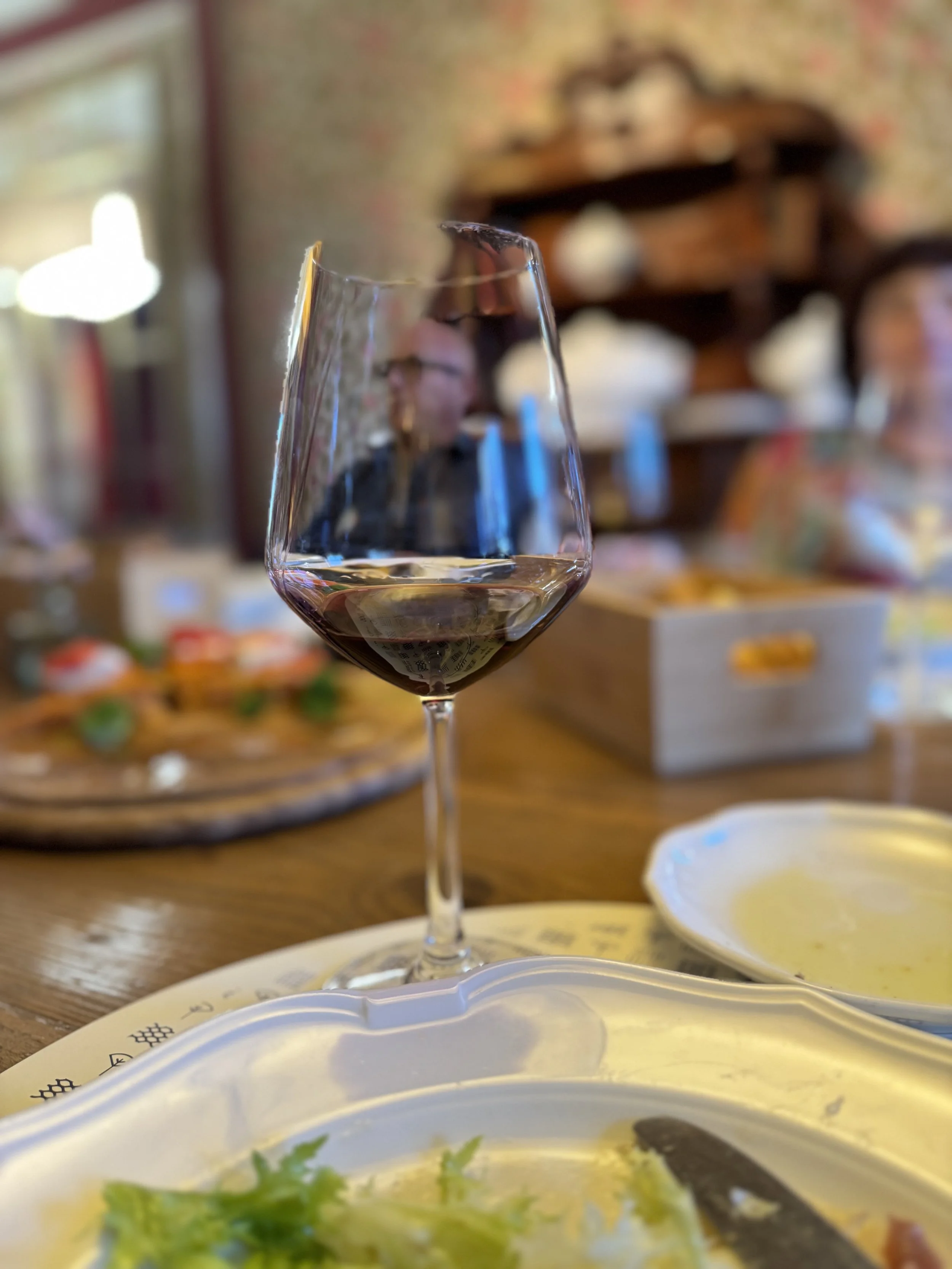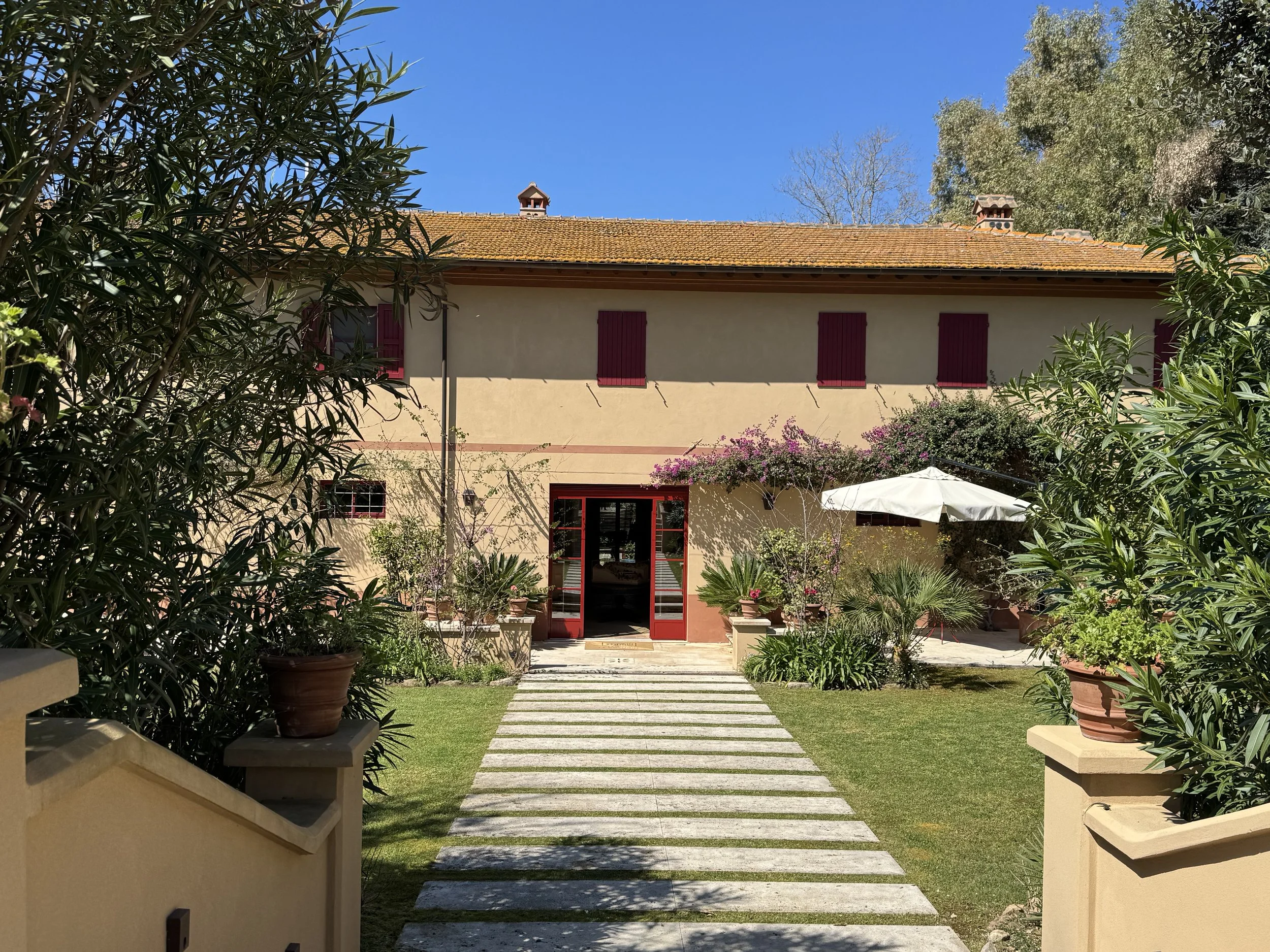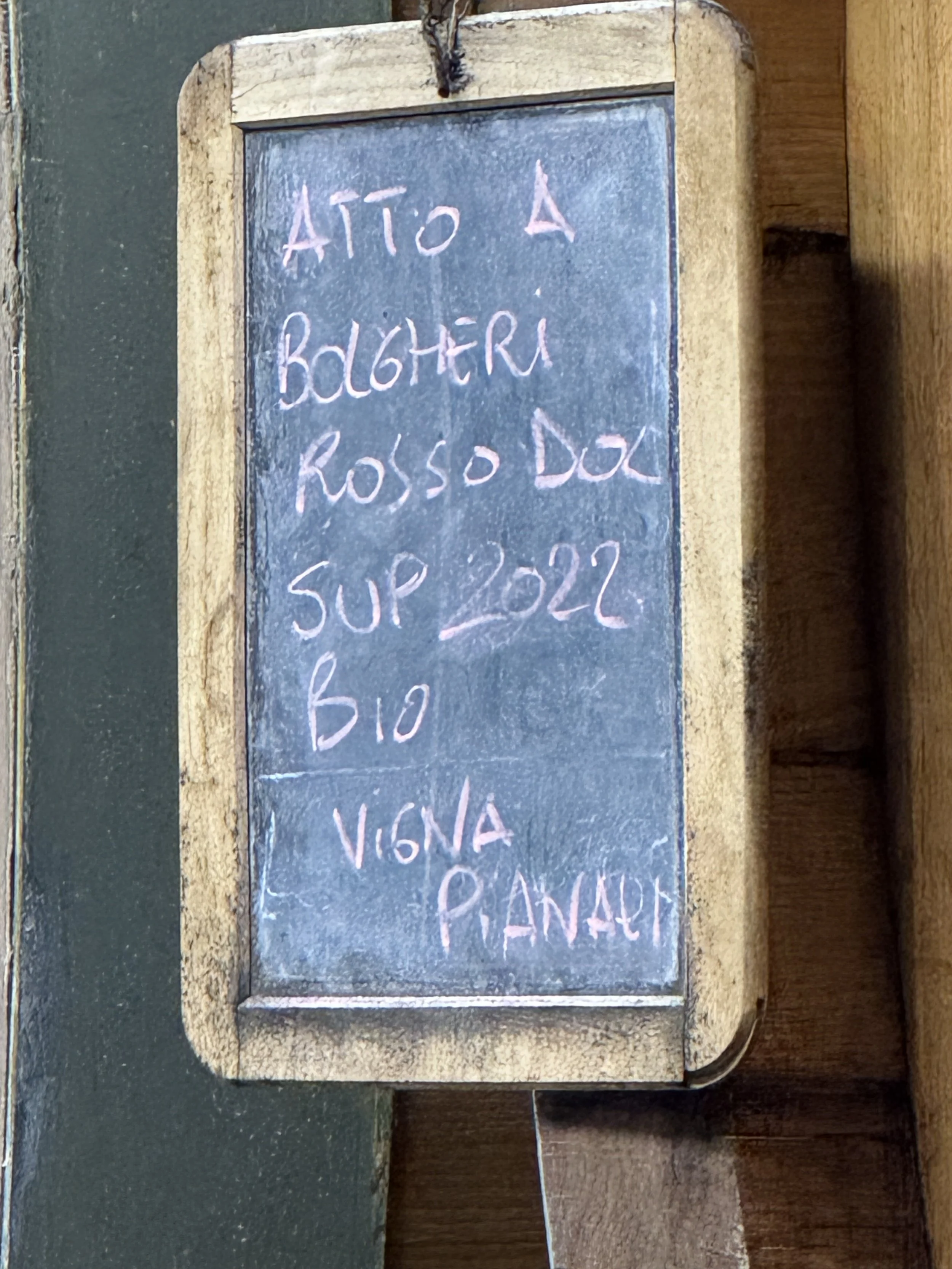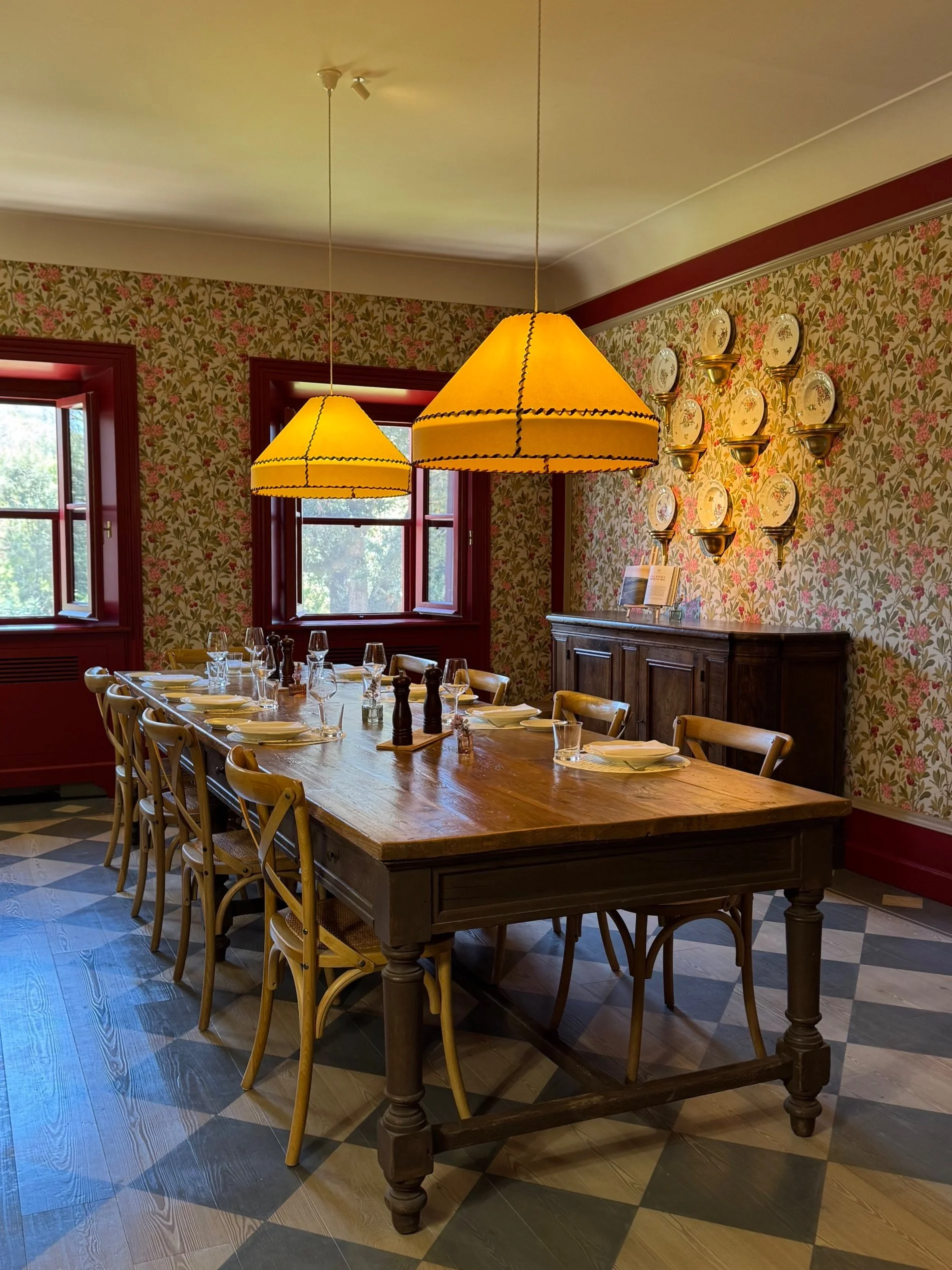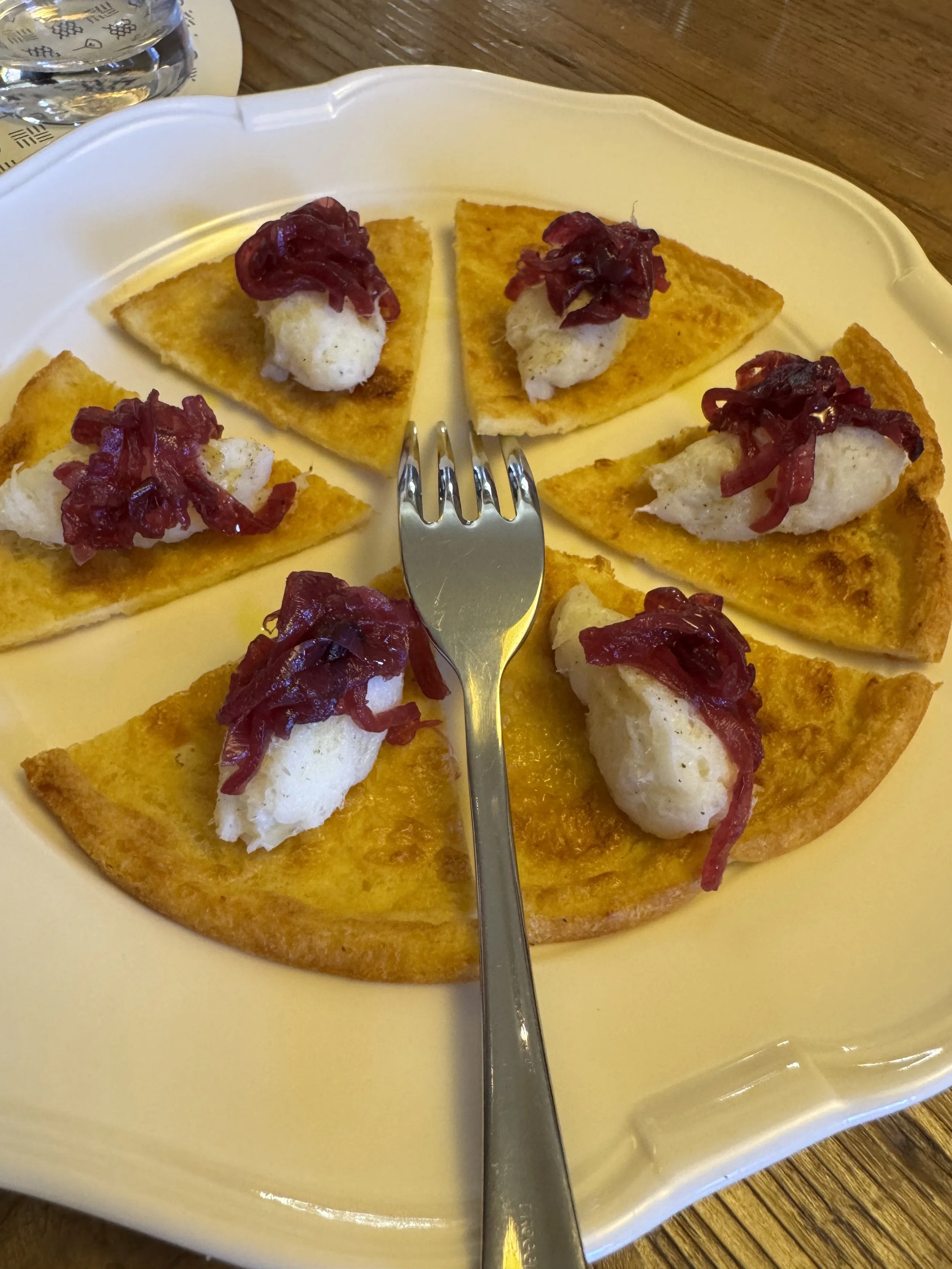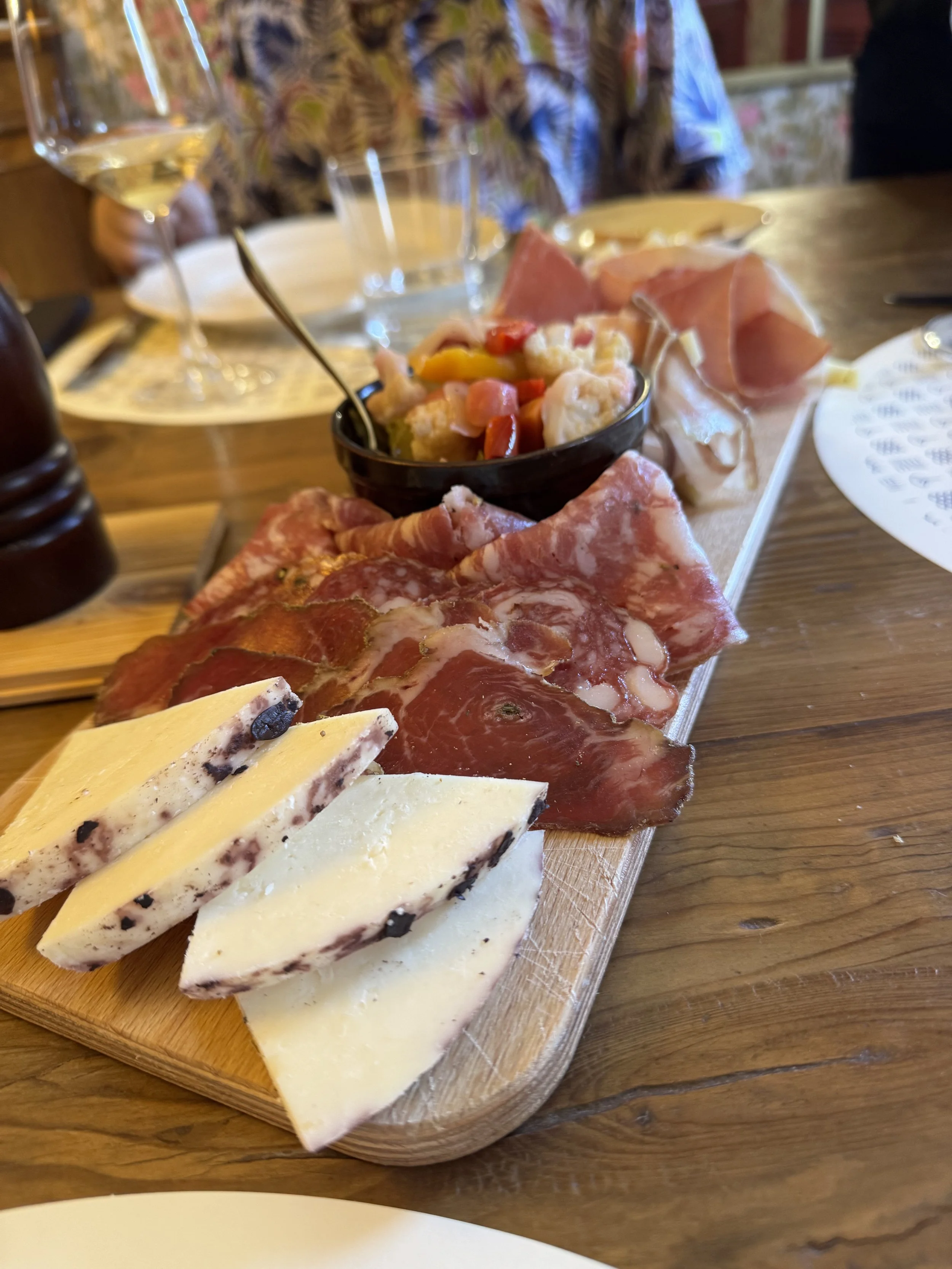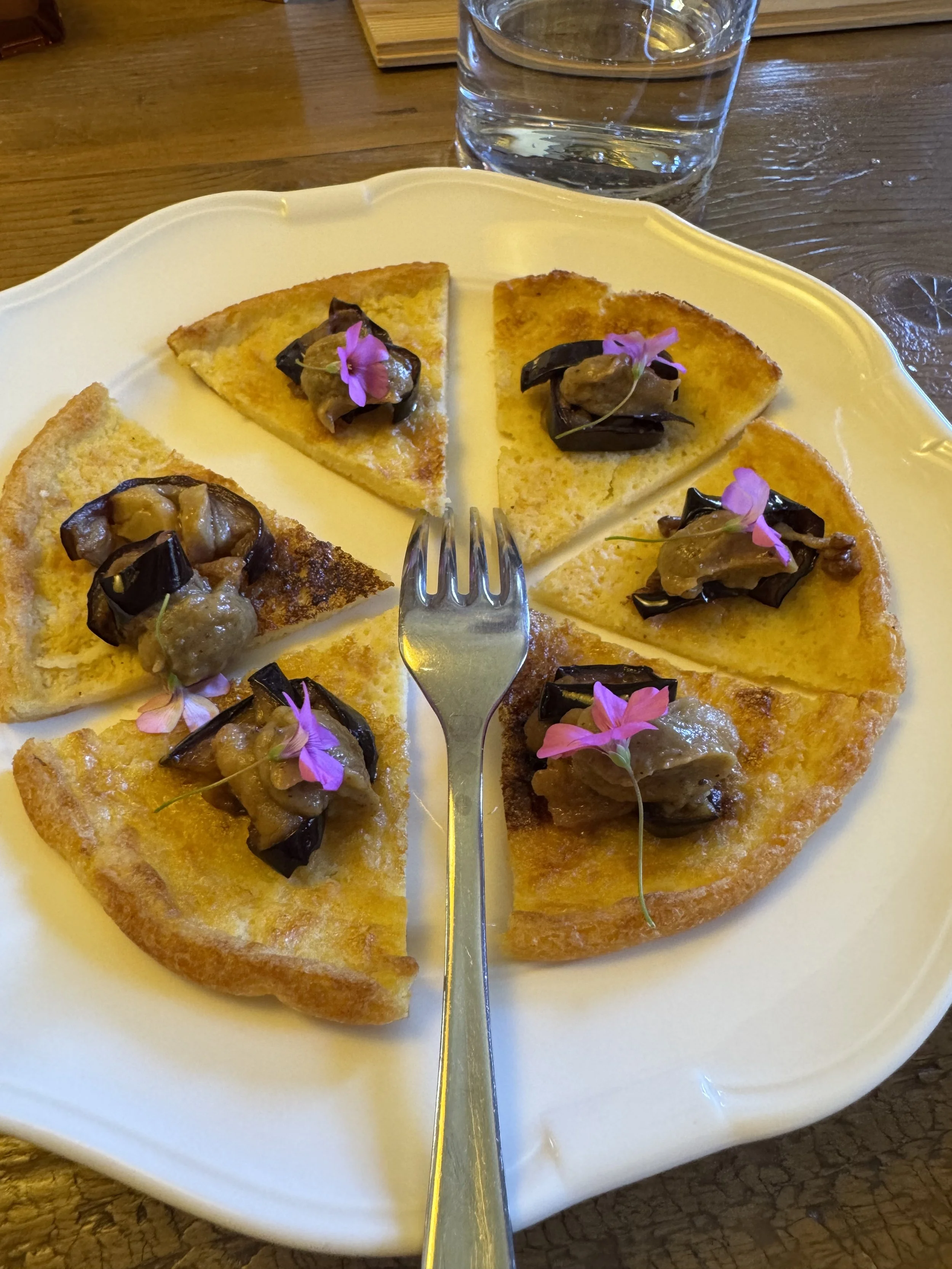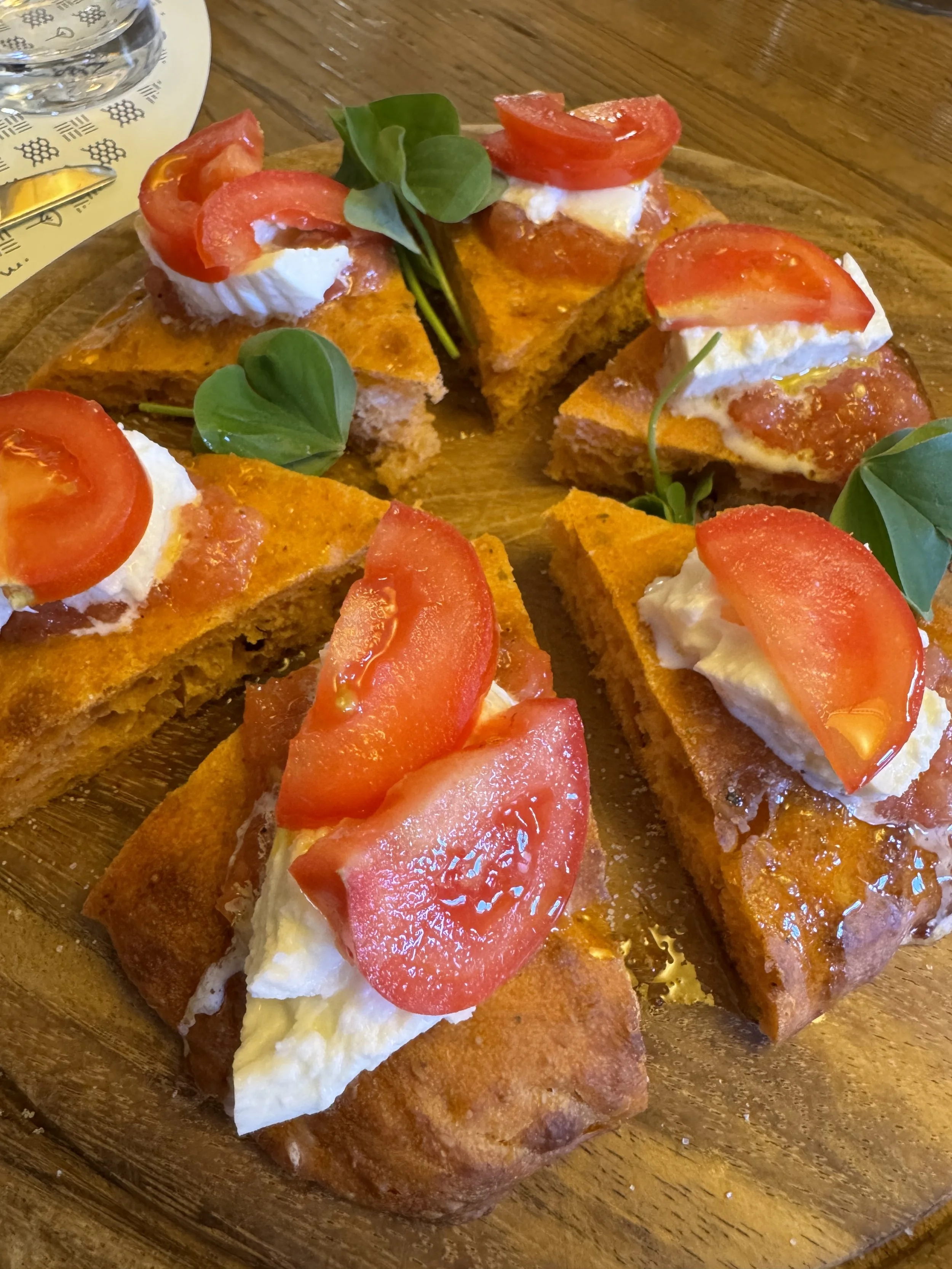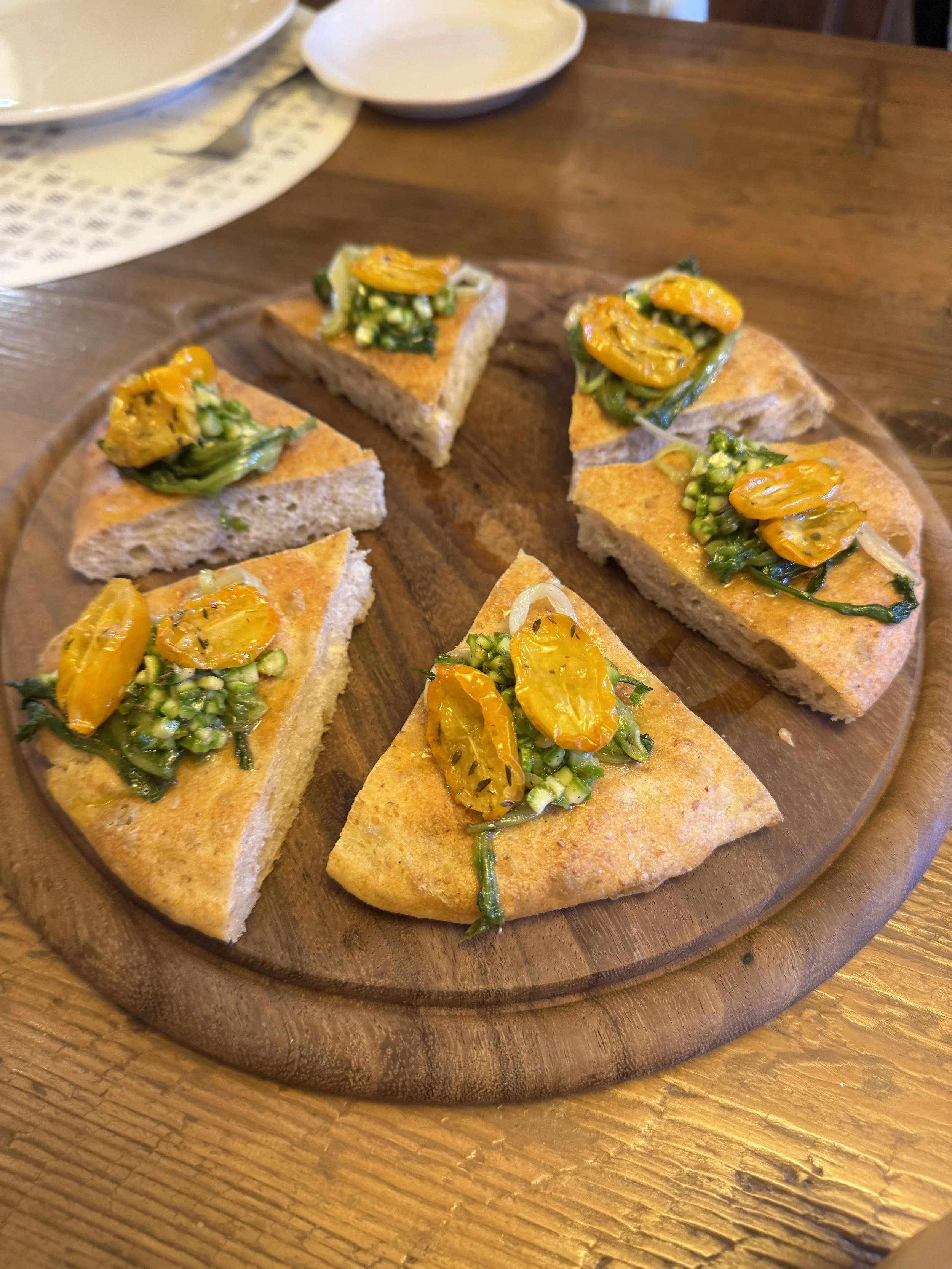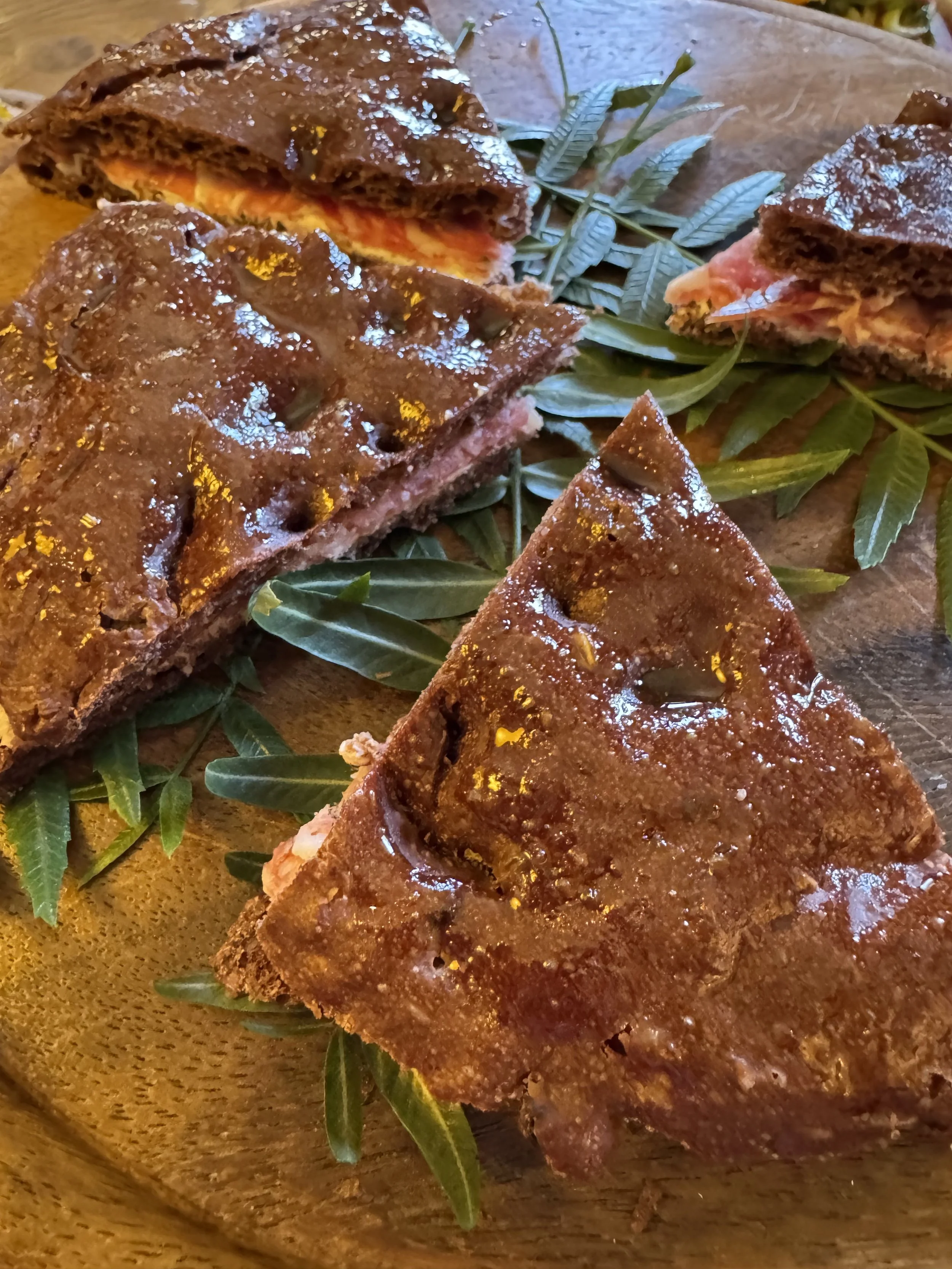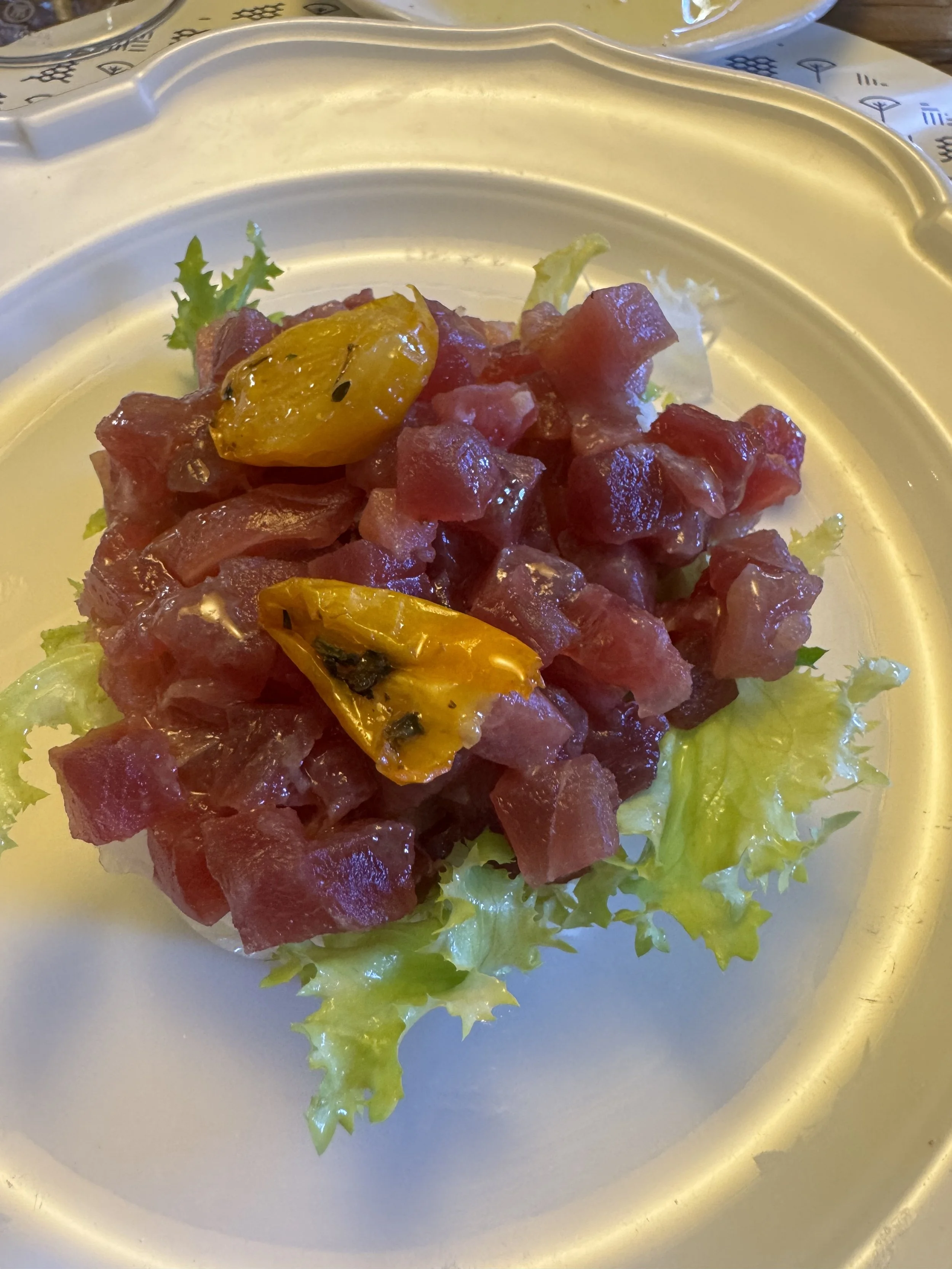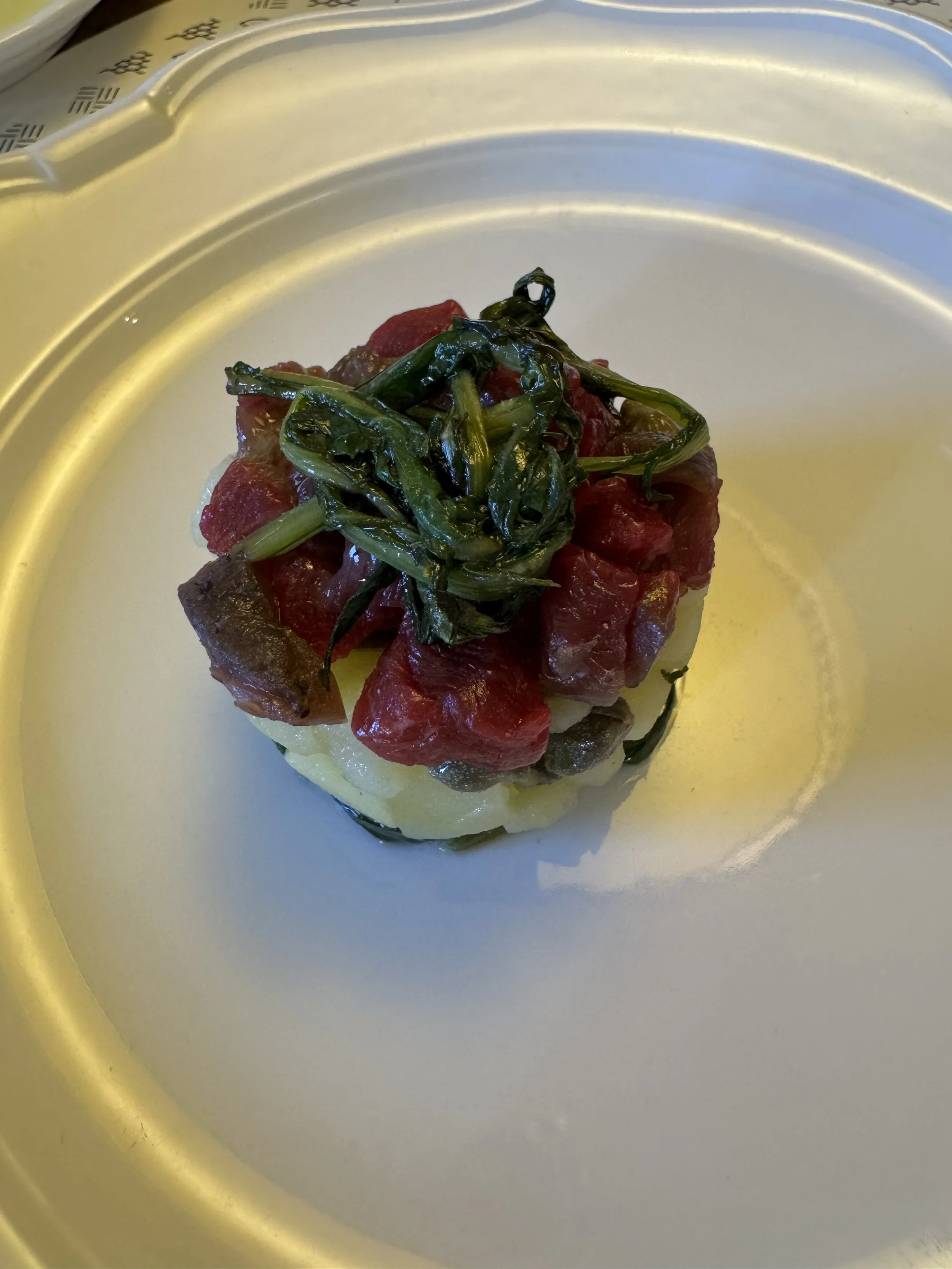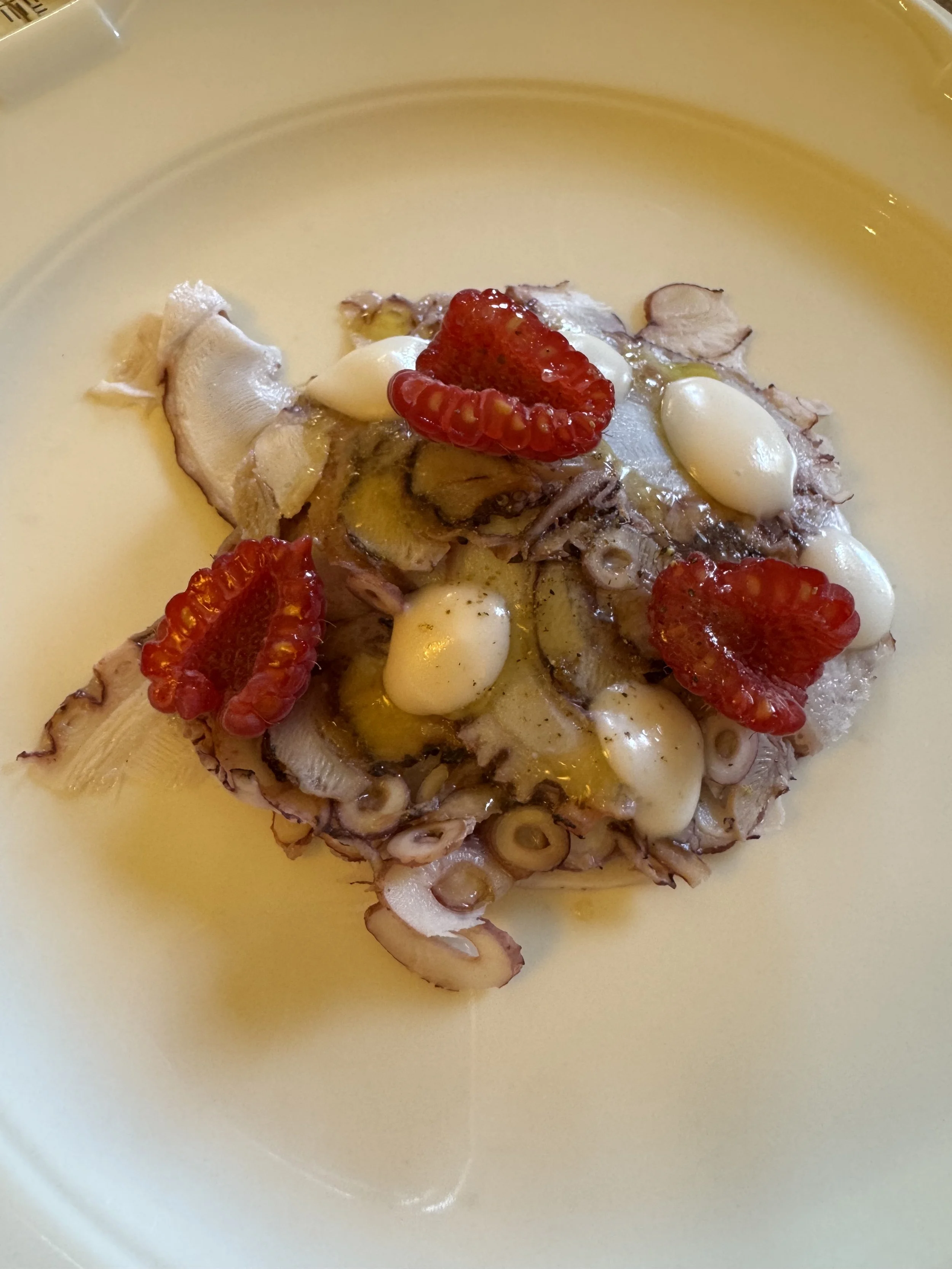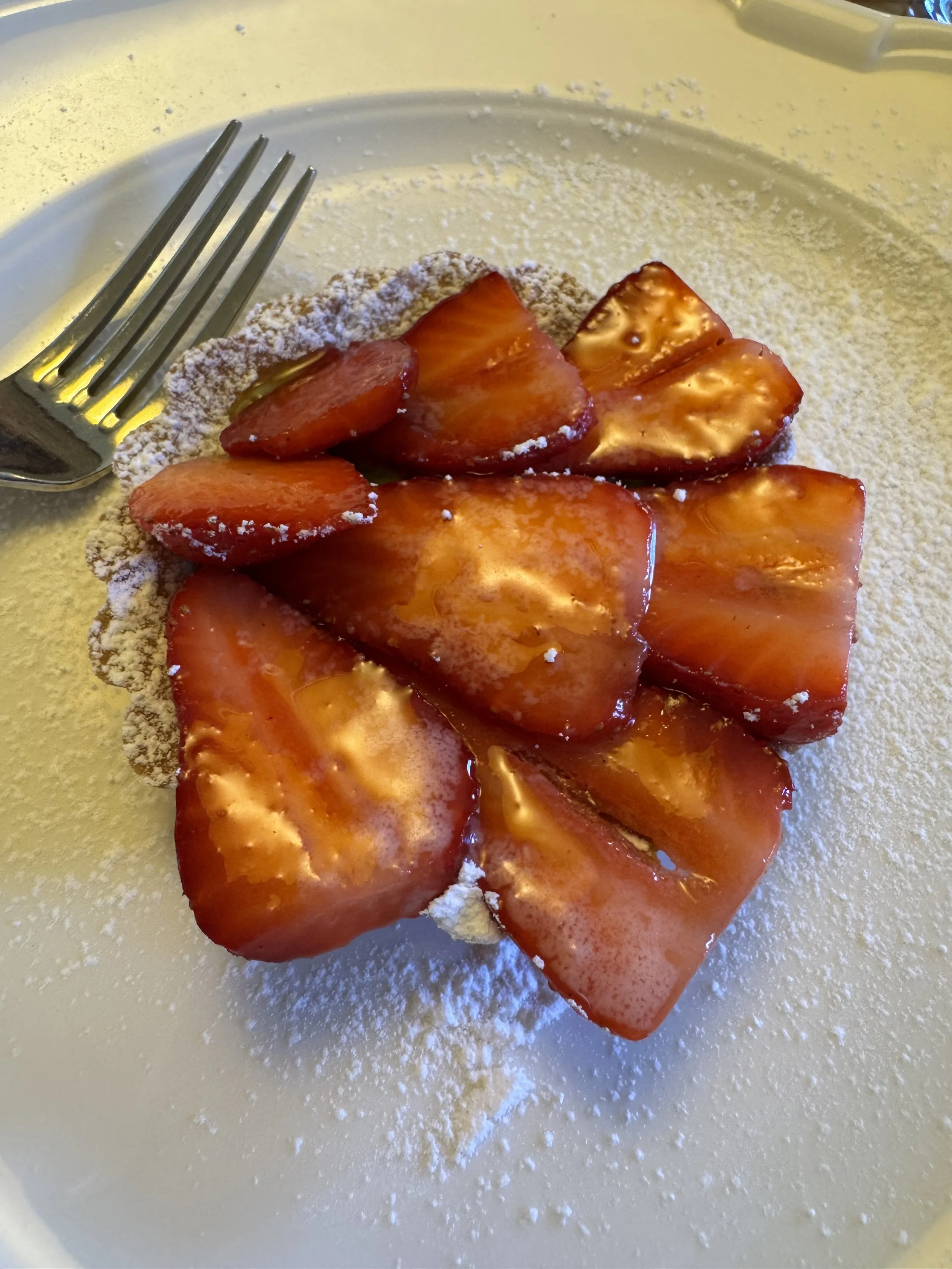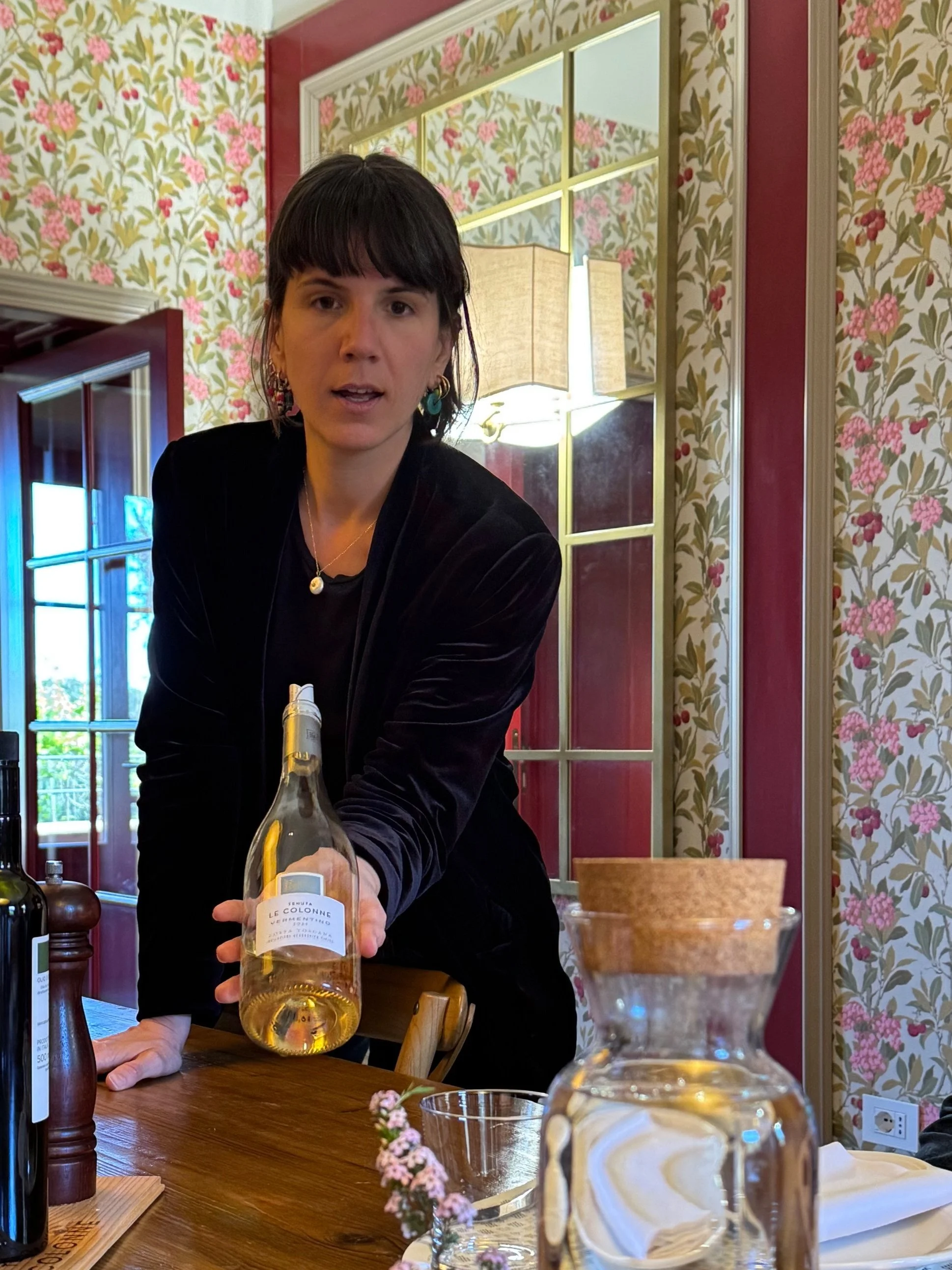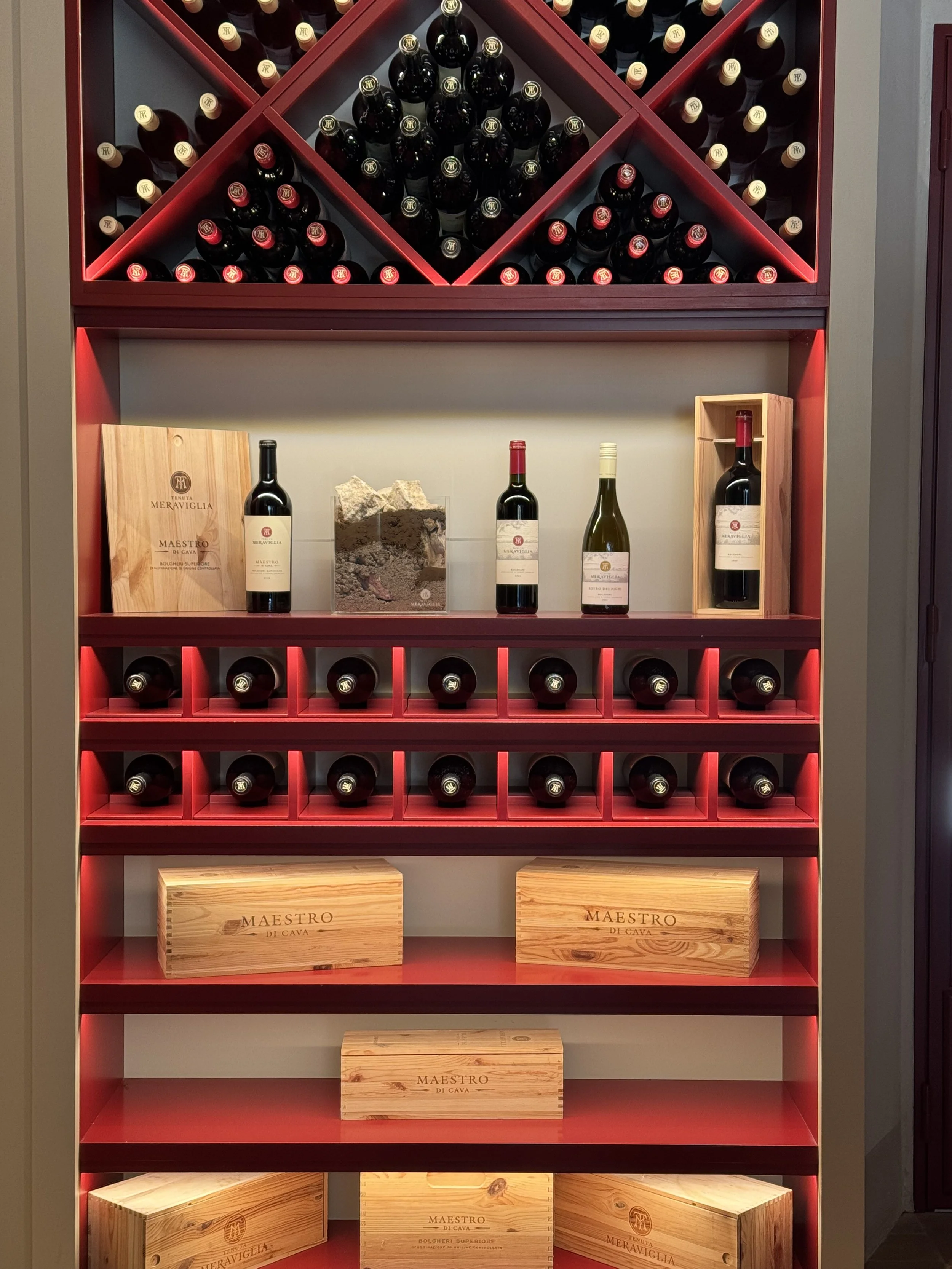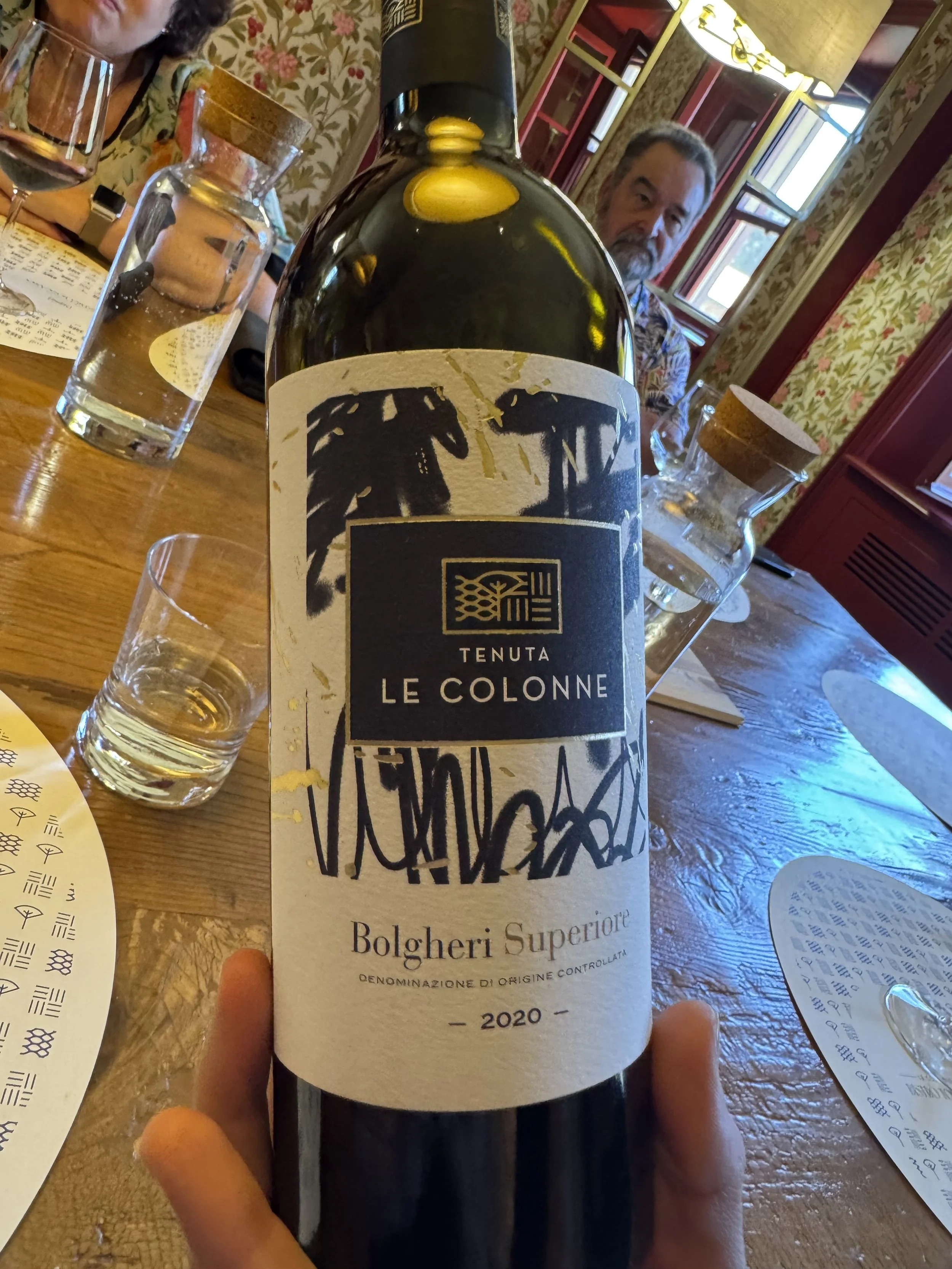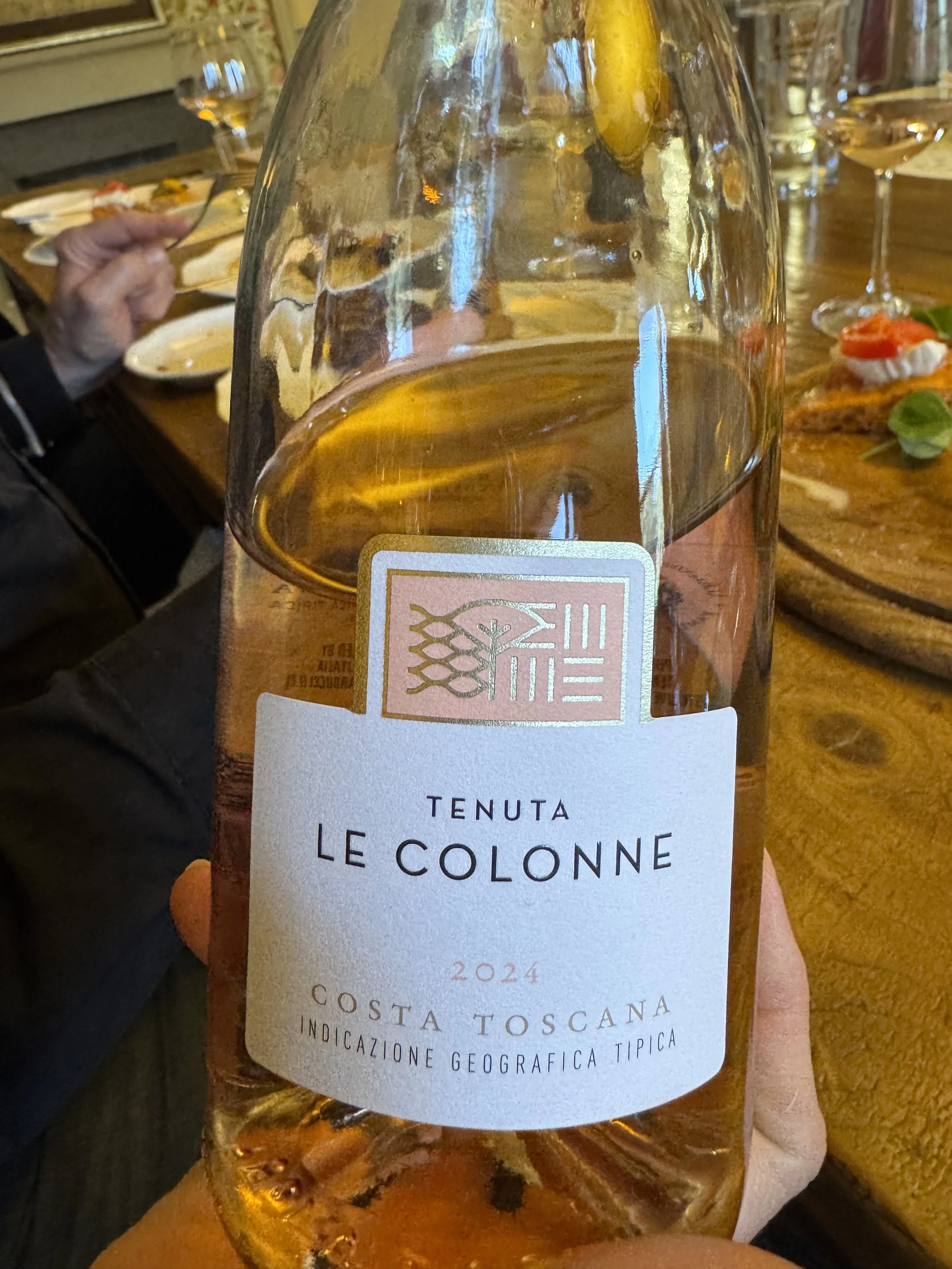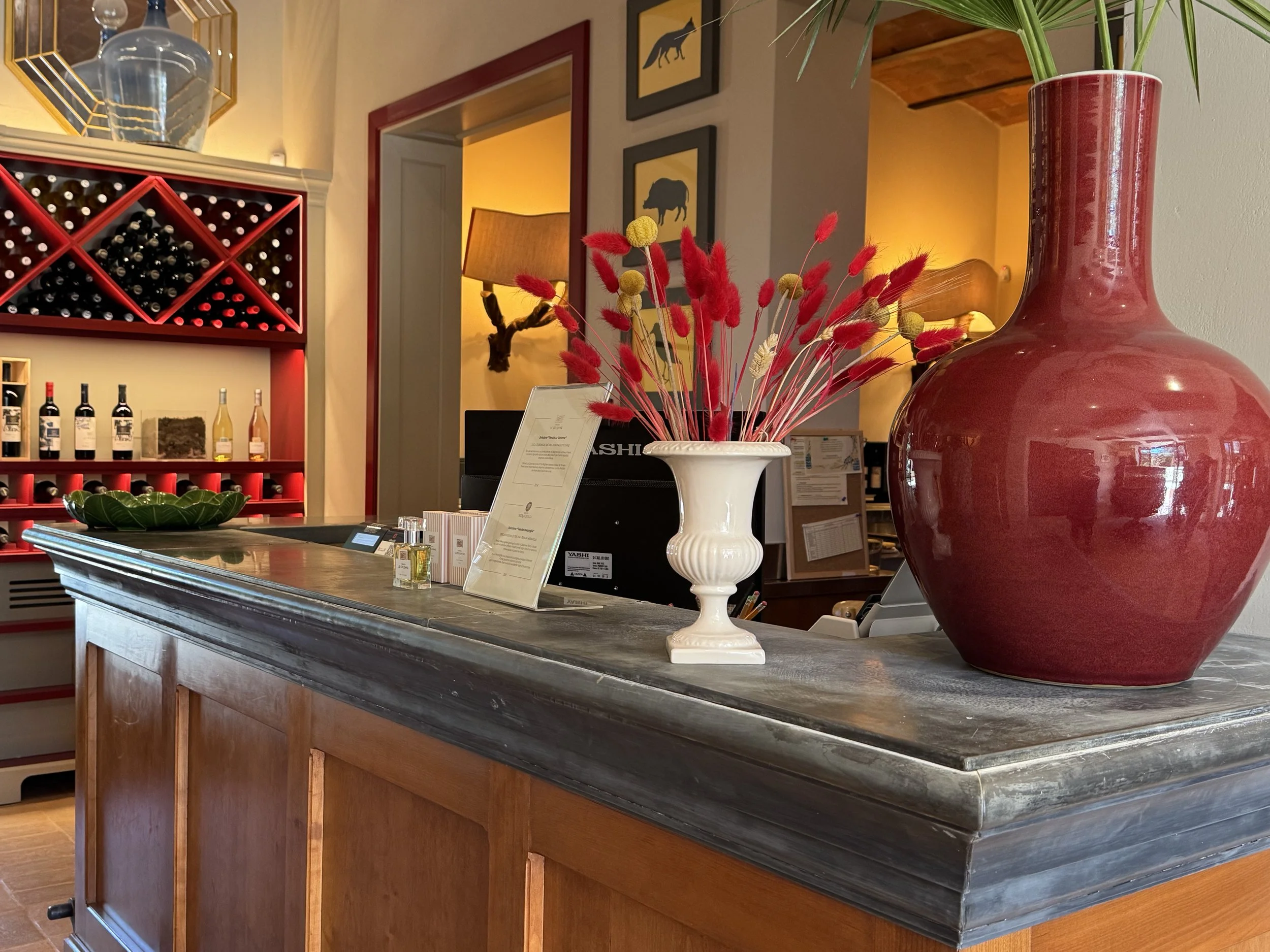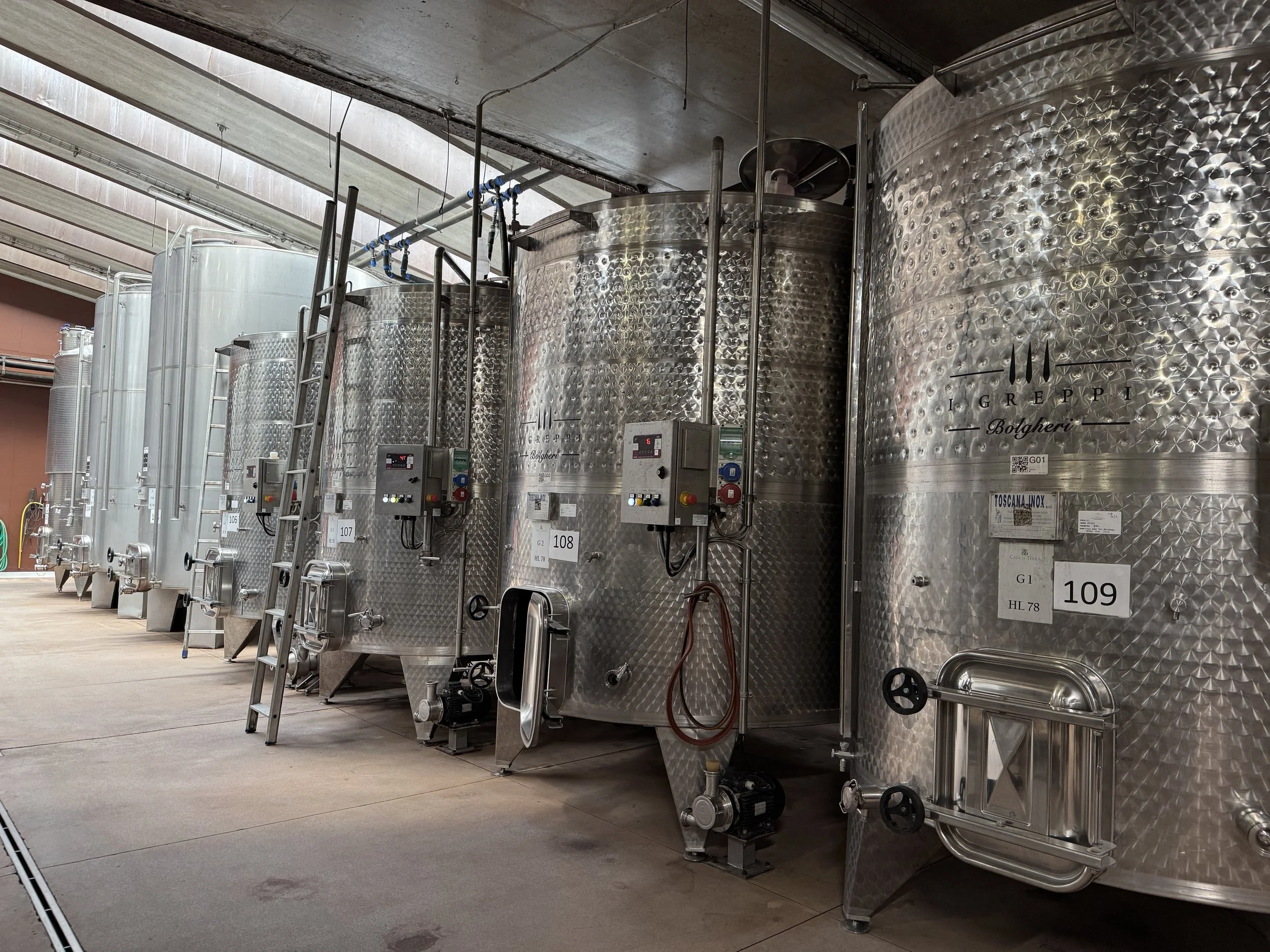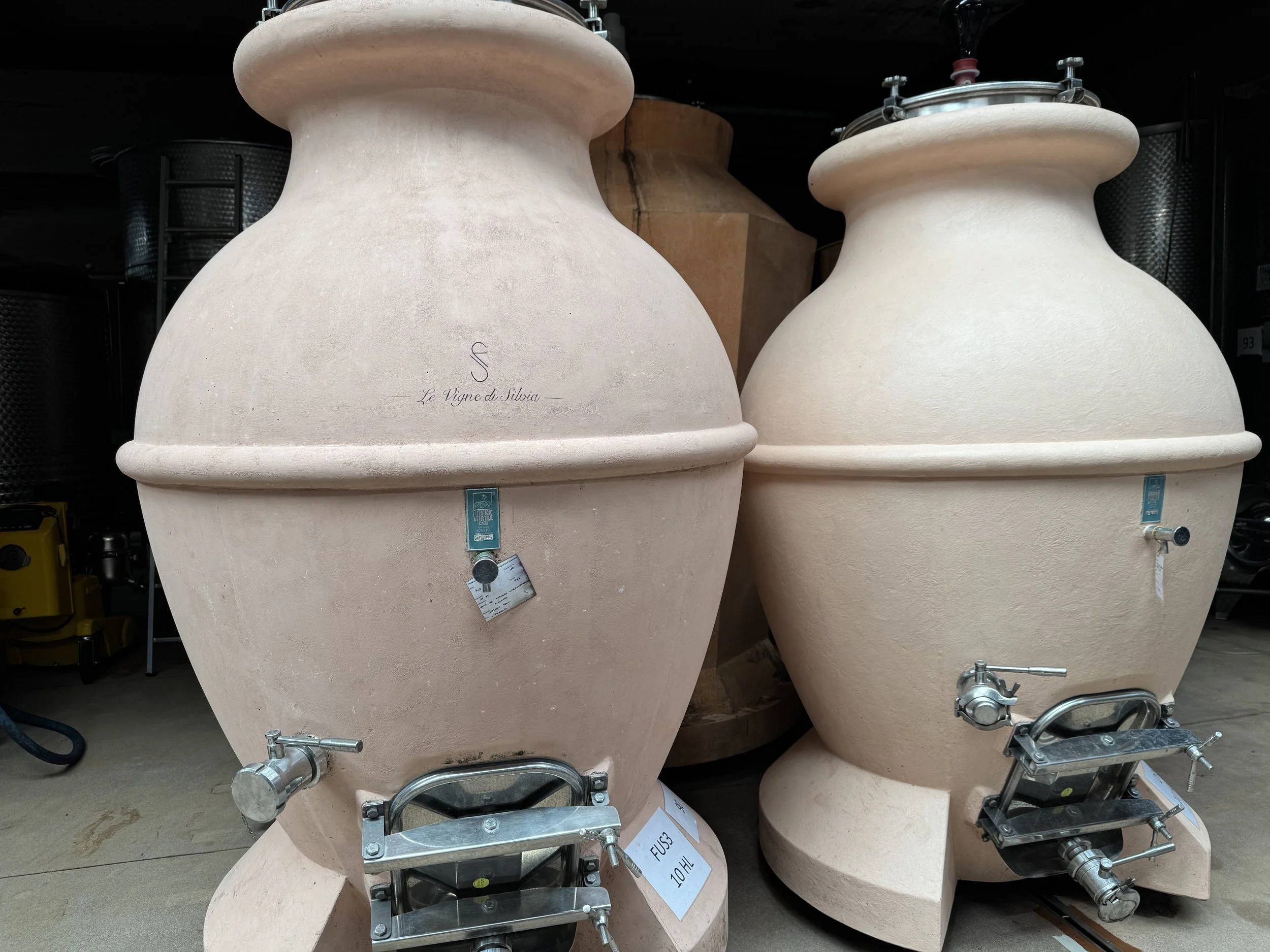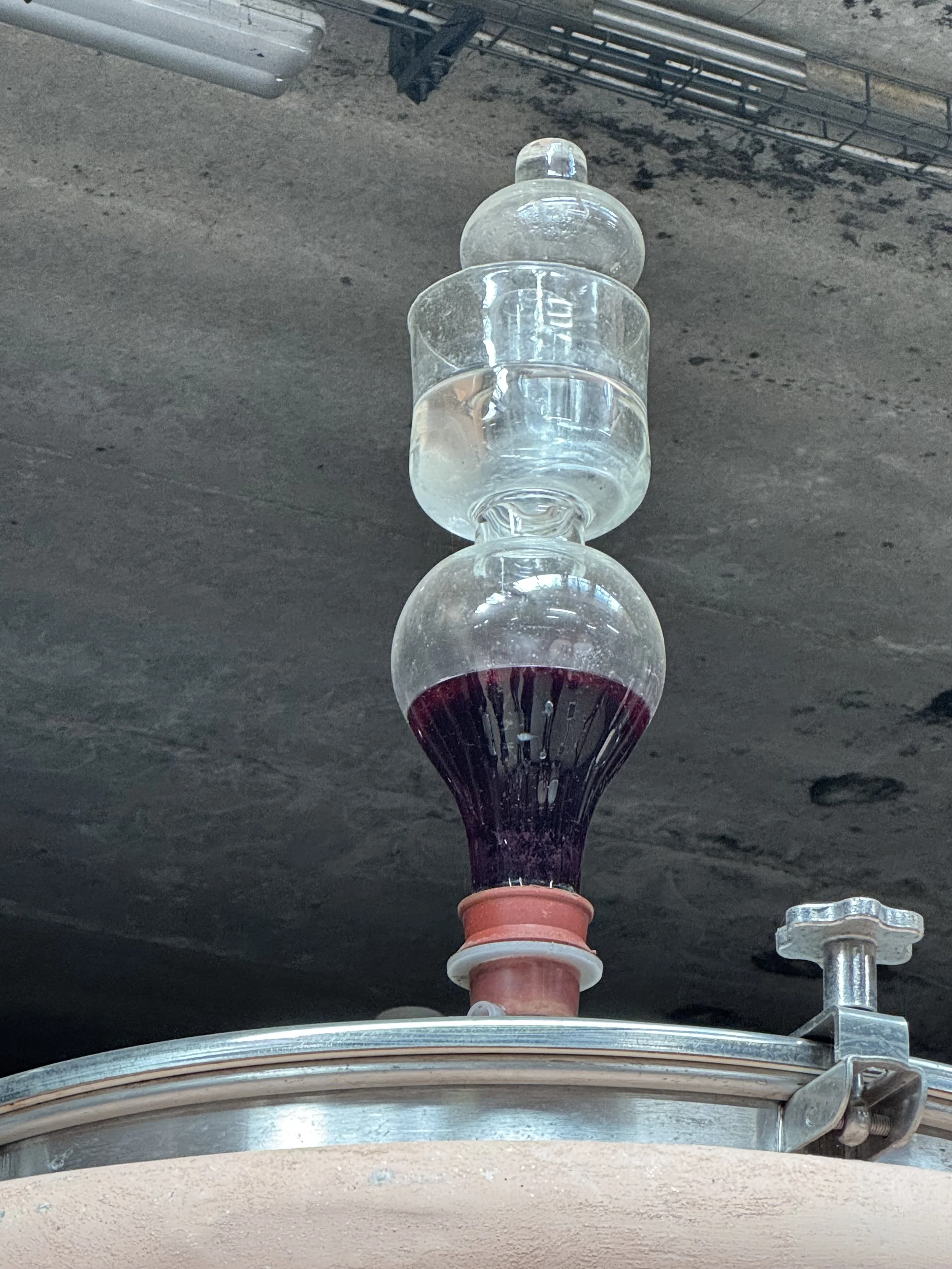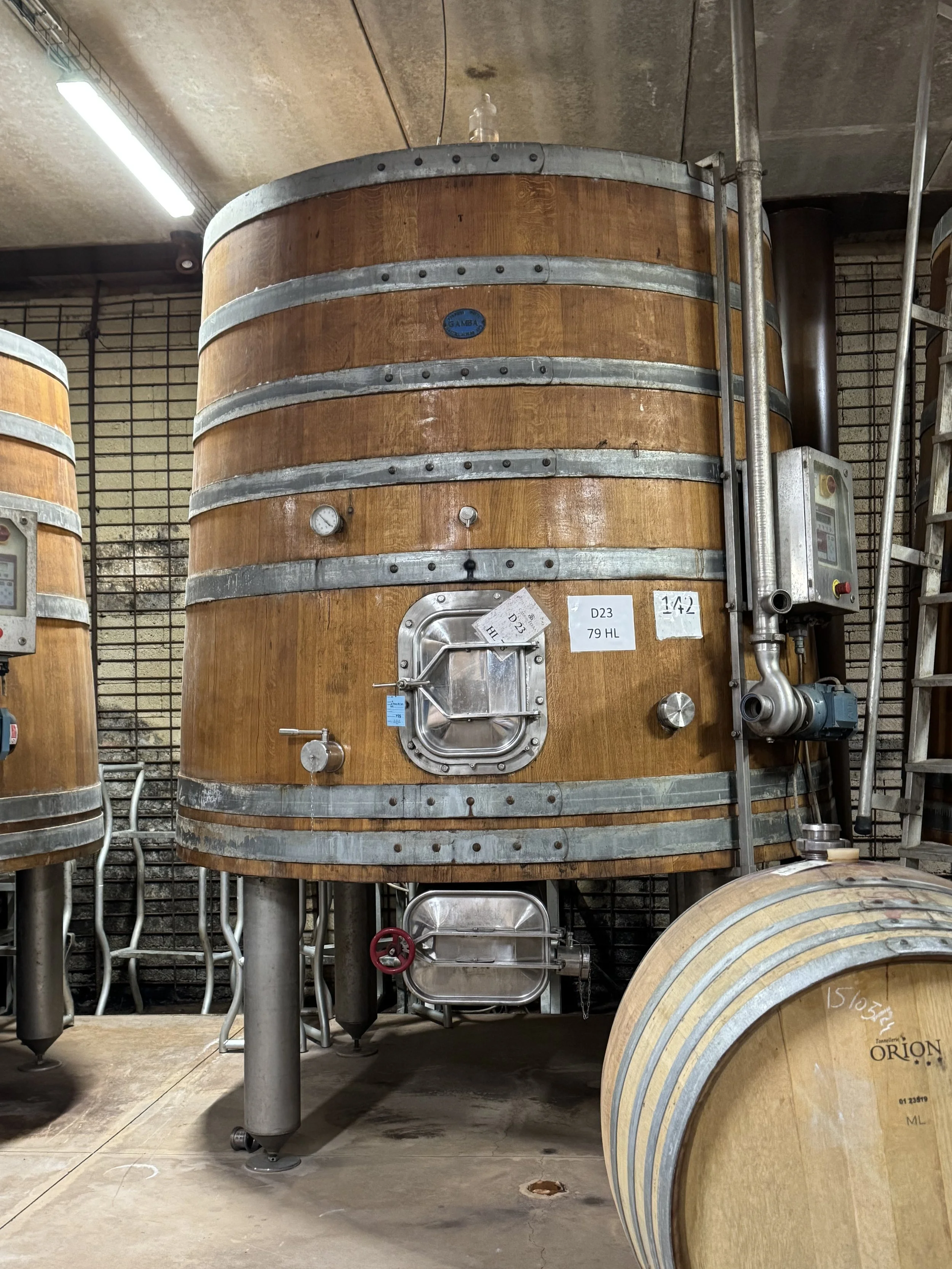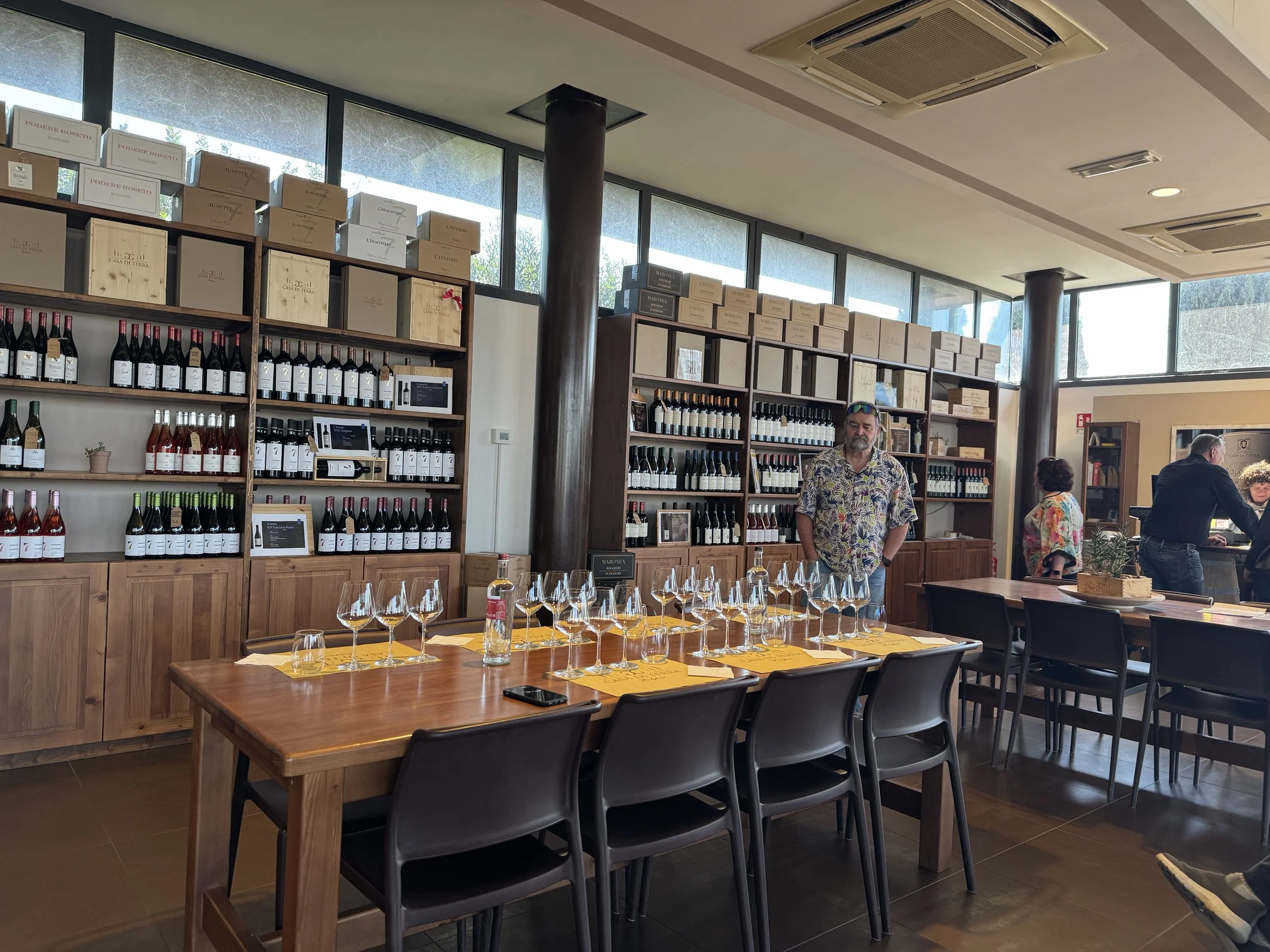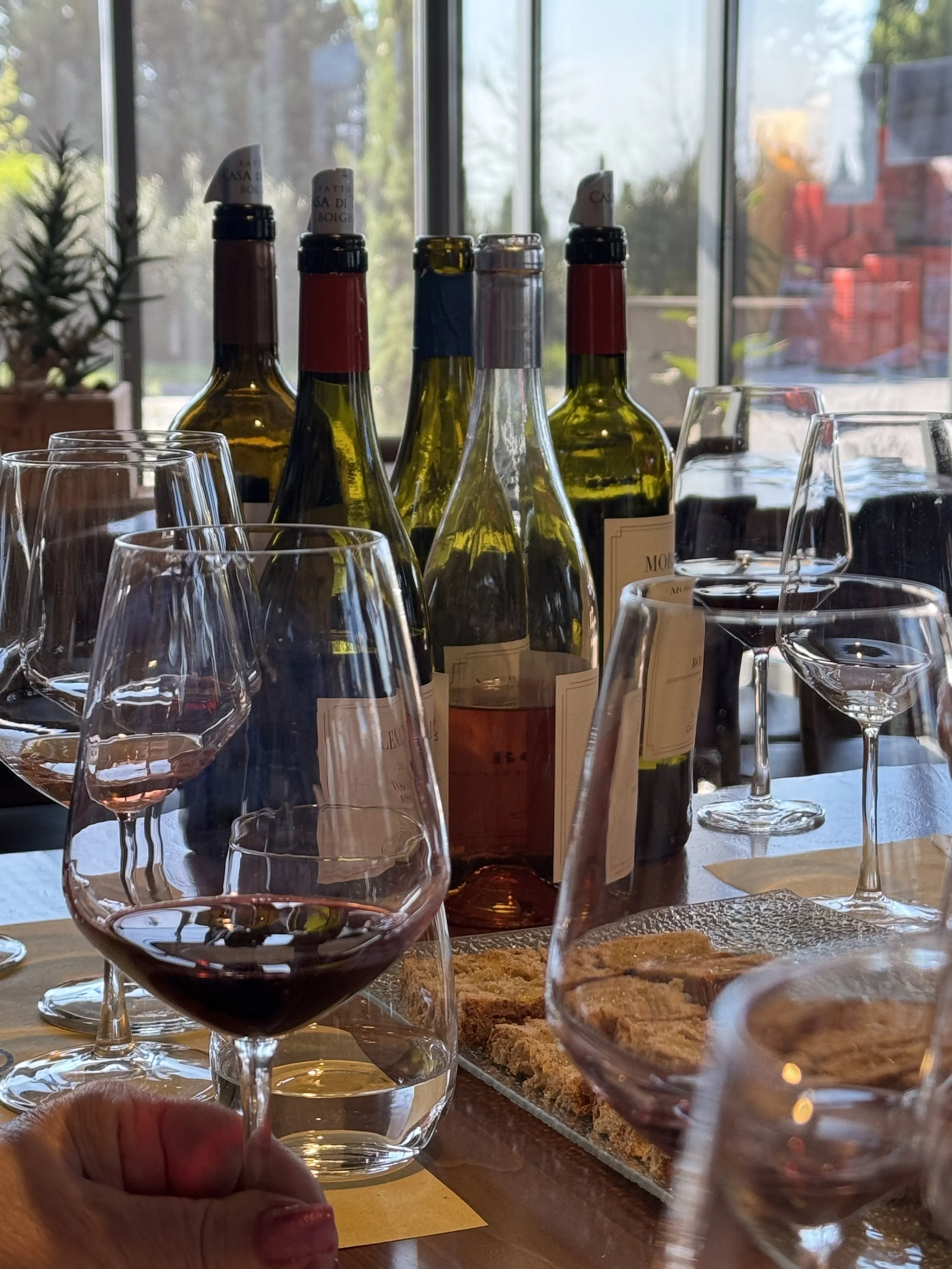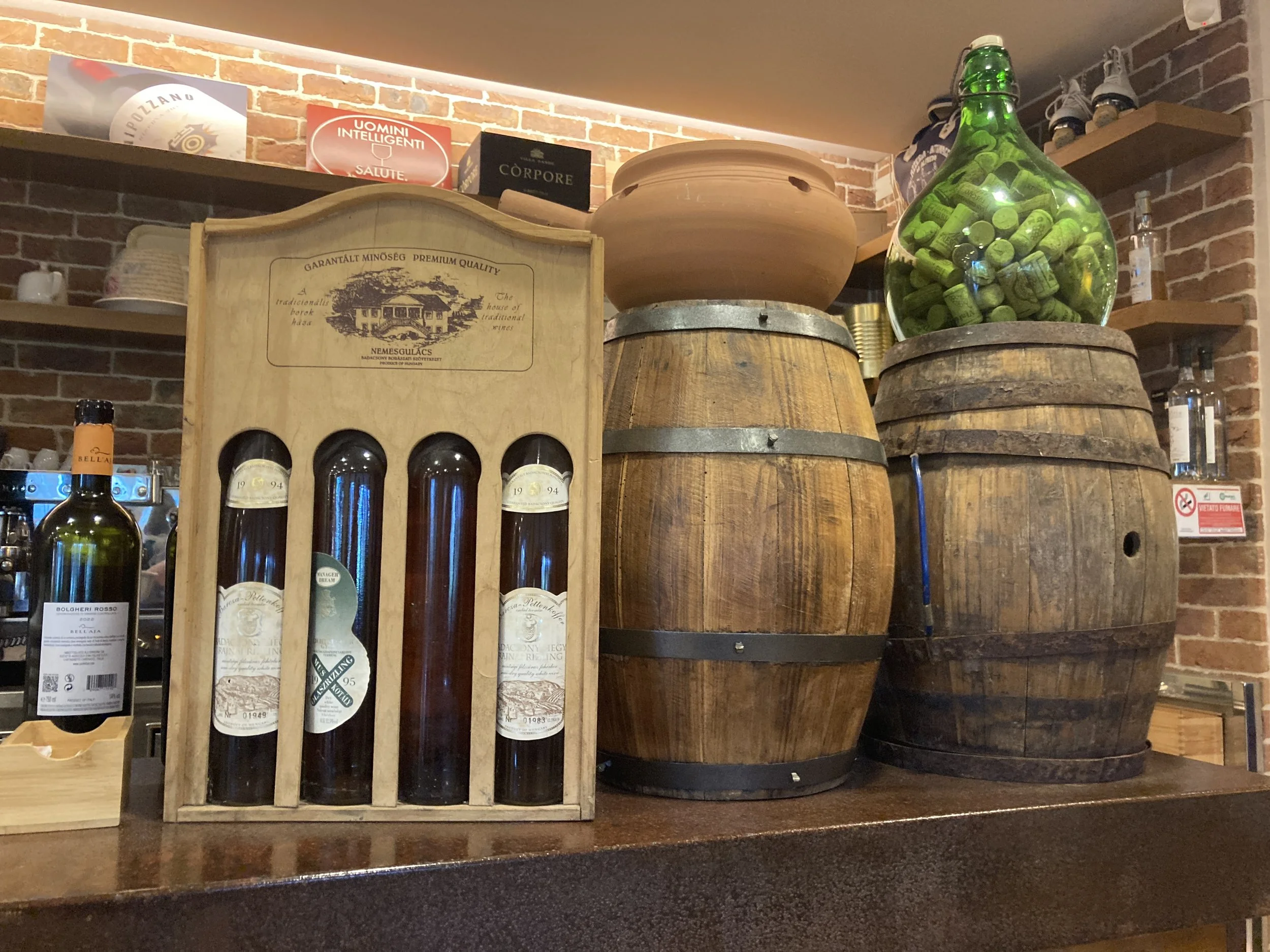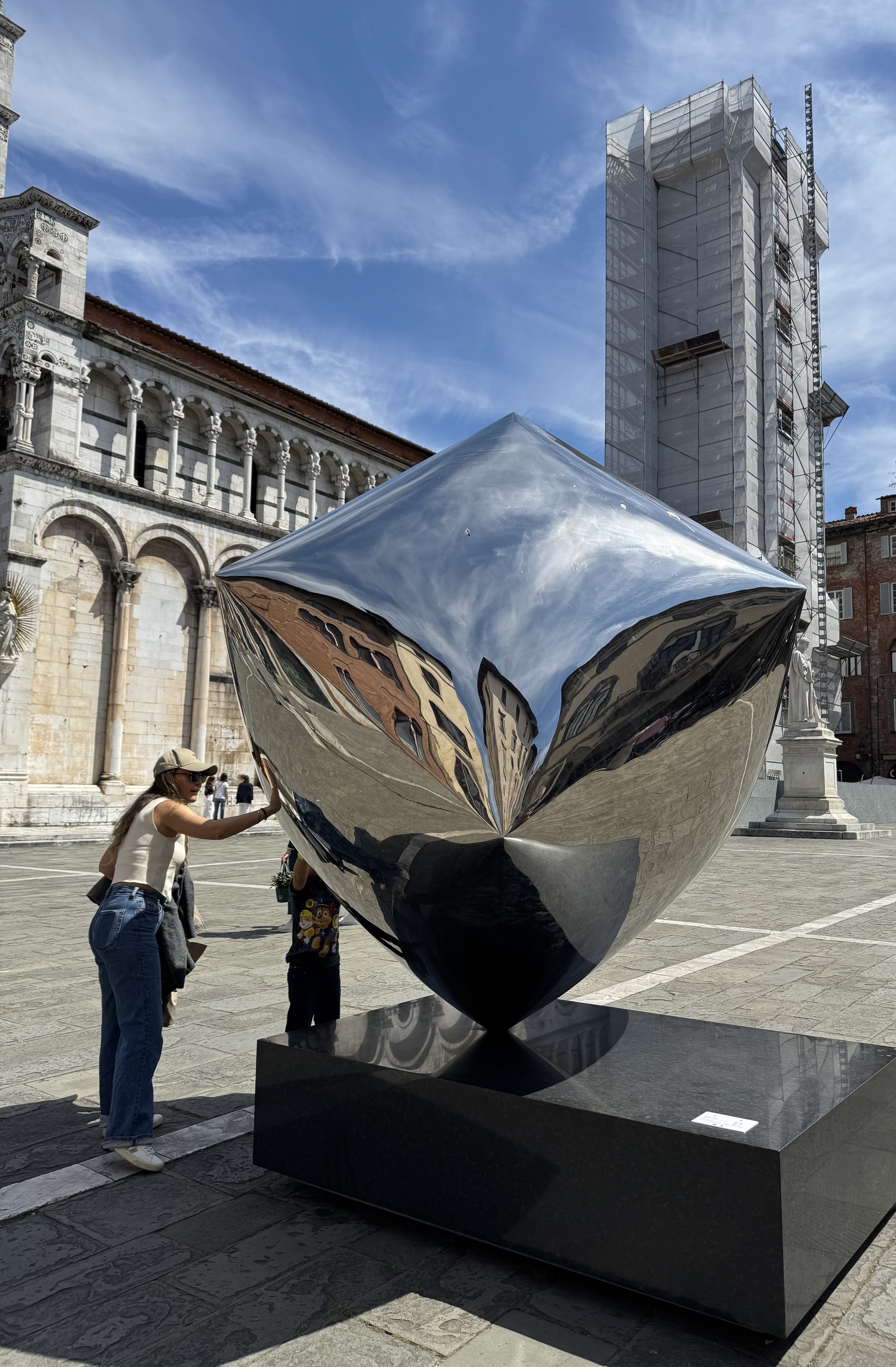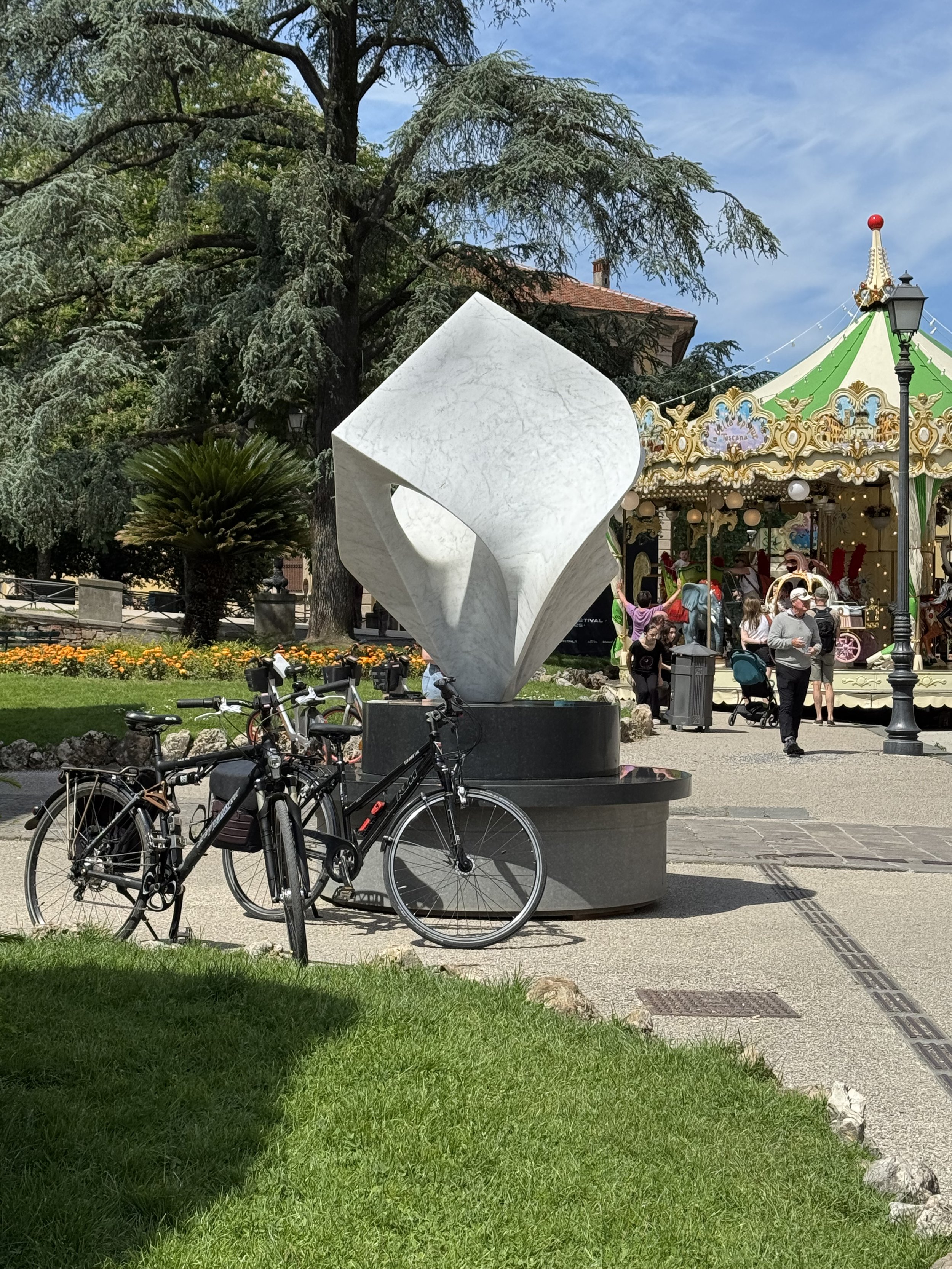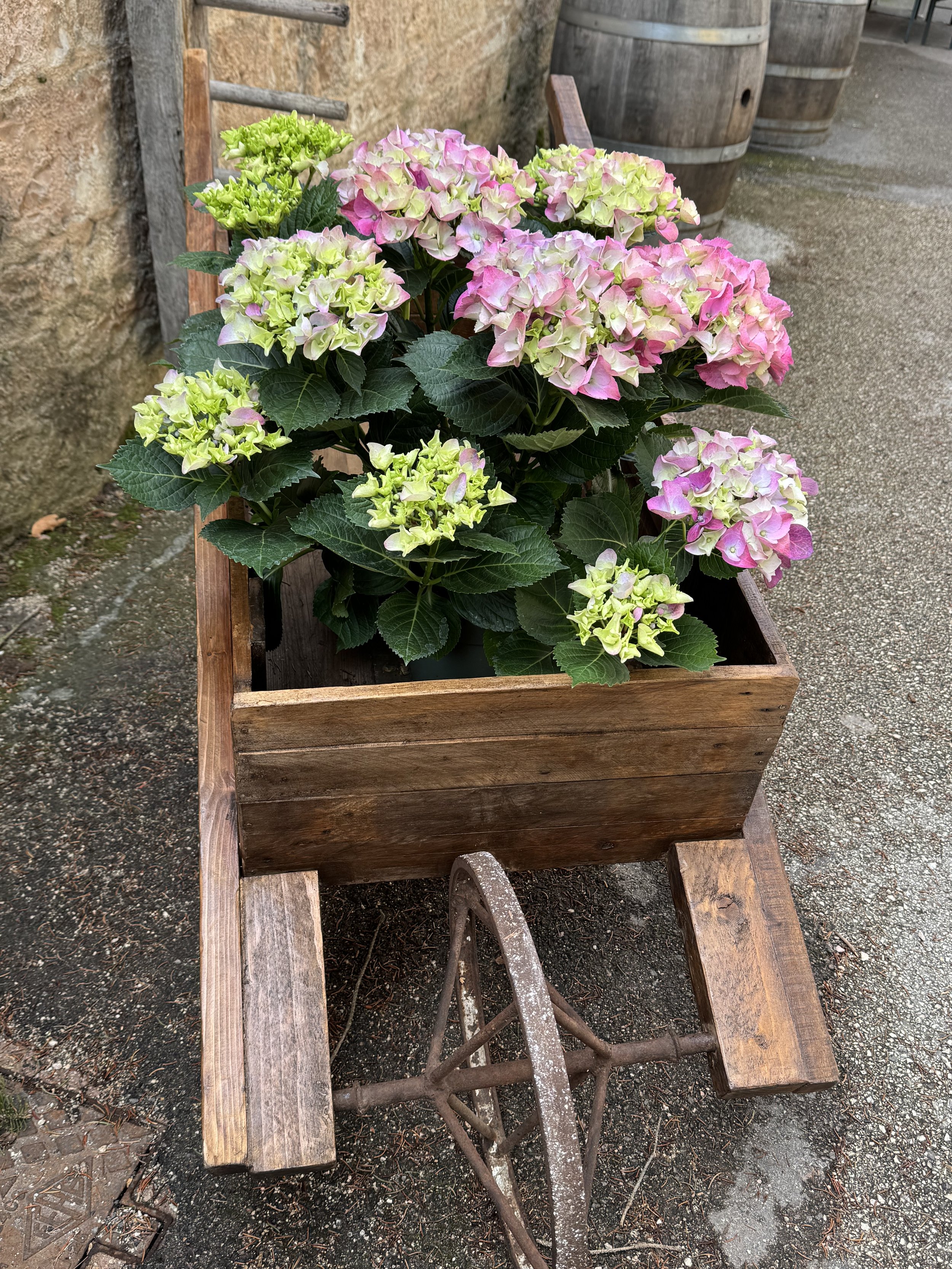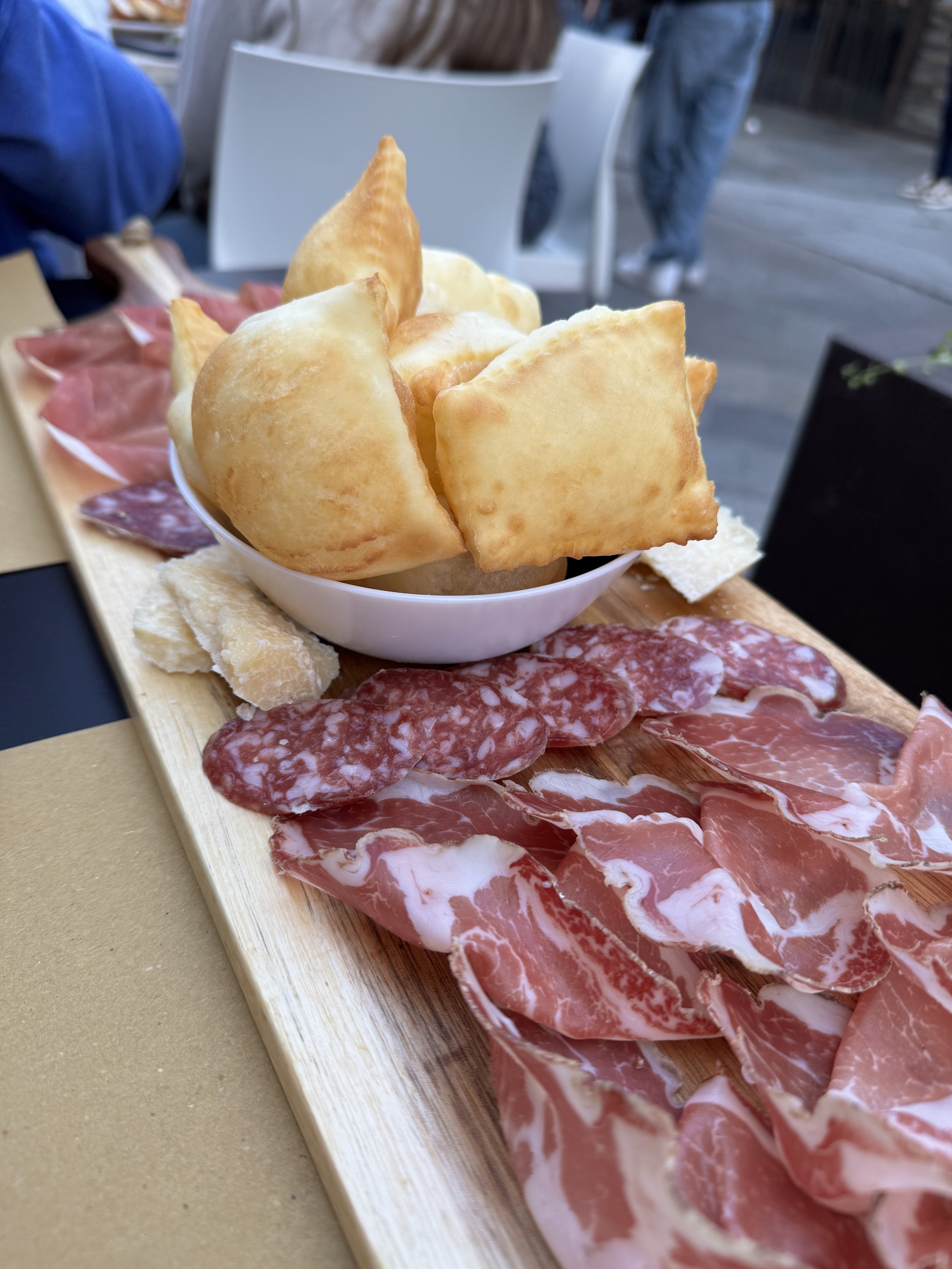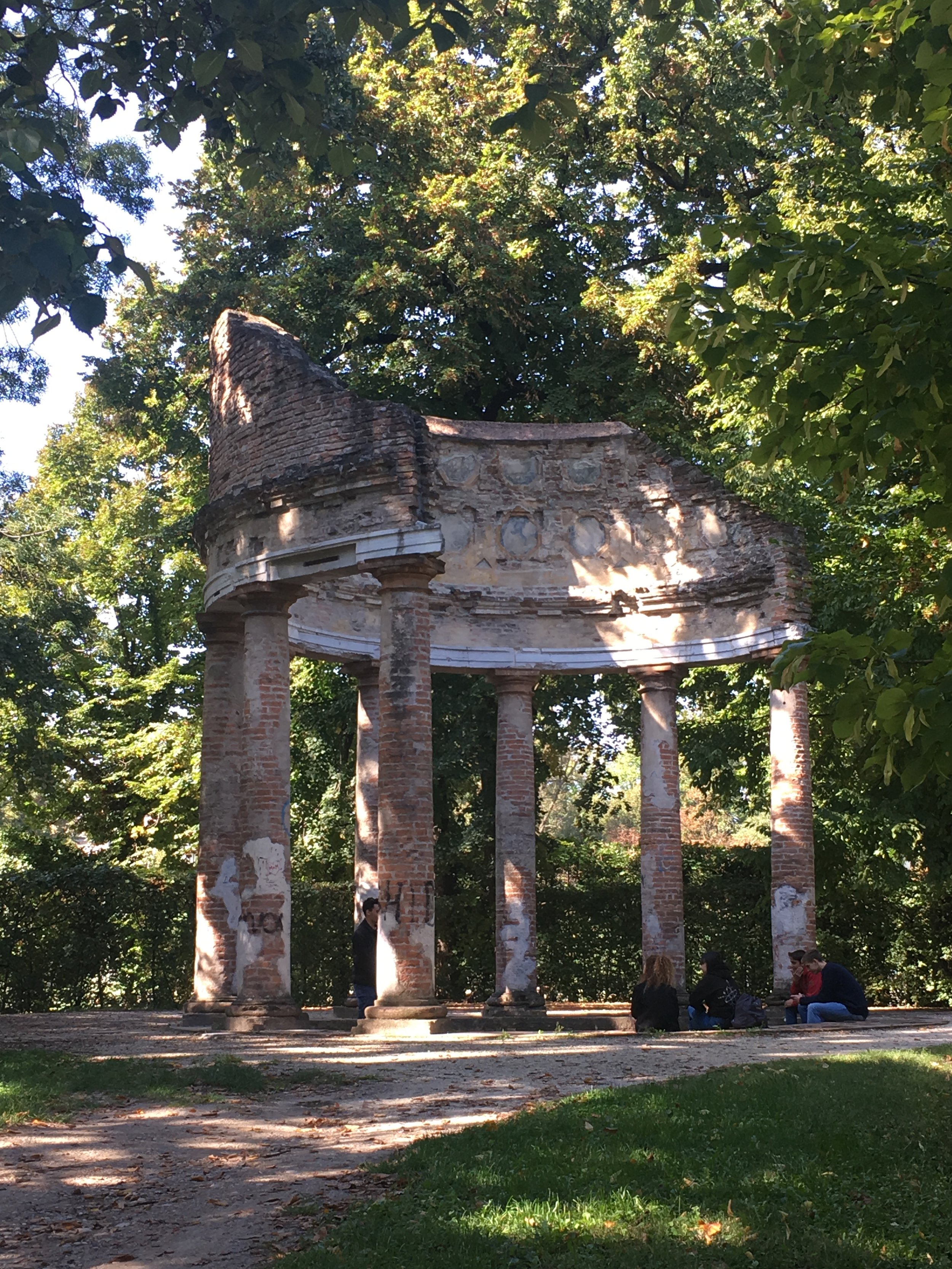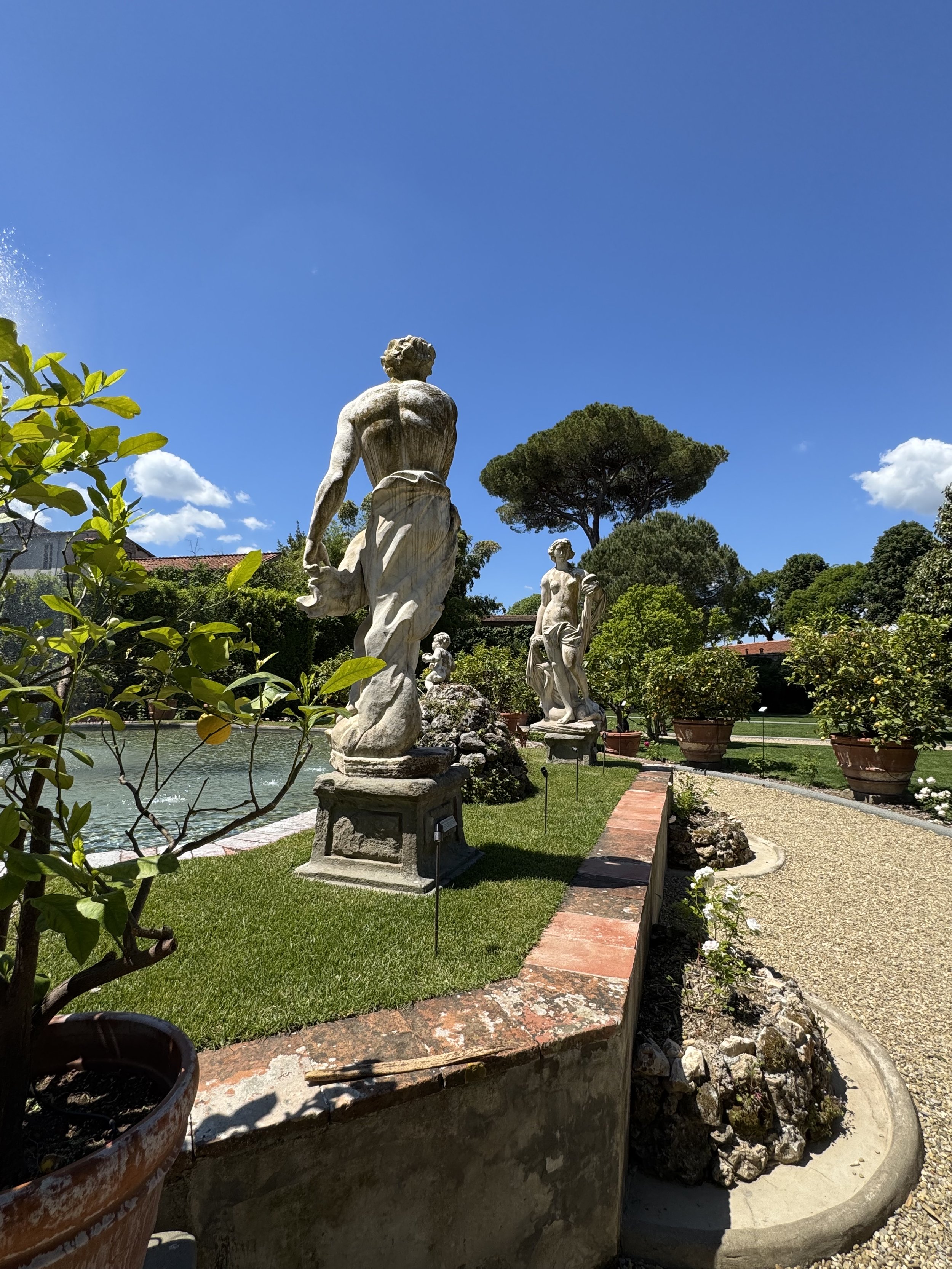A Day of Wine Tasting in Bolgheri
Our introduction to the wines at Tenuta Le Cologne began with a discussion about the topography and climate of the Bolgheri region.
One of Italy’s smaller, and perhaps lesser-known, wine regions is that of Bolgheri. Bolgheri is a town which has given its name both to a region, which lies along the coast of Tuscany south of Livorno, and to the wines produced there.
Unlike some of the more well-known wines of Italy, commercial wine production is relatively recent in this area, taking off only in the 1970’s. But its roots go back further to when the first French style grapes were planted in the 1940’s. Production then was small, starting with a single vineyard, and just for family use.
I like to imagine sitting with the Marquis Mario Incisa della Rocchetta, sipping wine from his small vineyard, and seeing that “ah ha” moment on his face as he realized what a special wine he had. That wine was called Sassicaia and today it is the most famous (and most expensive) of the Bolgheri wines.
Someday I hope to taste this very special Bolgheri wine.
The unique quality of Bolgheri wines comes from several factors. First is the French varietal grapes – Cabernet Sauvignon, Cabernet Franc, and Merlot, sometimes blended with Syrah or Petit Verdot. Second is the land and microclimate in which the grapes are grown. Bolgheri vineyards closest to the coast are influenced by the sandy soil and sea breezes. Moving inland and higher up the hills, the higher elevations have a more gravel type soil. Each setting influences the flavors of the wines produced. The third factor is the bowl (our guide called it an amphitheater) of hills which surround the area, giving a big hug to the vineyards.
The hills surrounding the Bolgheri vineyards help to create the climate, and the flavors, of the wines
I am far from a wine expert; I learned all of this information on a day of wine tasting at two Bolgheri wine cellars. The trip was arranged by a group of friends, some of whom are much more knowledgeable about wines than am I. Of course, no one wants to be the designated driver on a wine tasting day, so we were lucky to have Giovanni Palmieri, from The Tuscan Wanderer, as our driver and guide for the day. Giovanni was able to share information not only about the wines but also about the countryside and the many small towns along the way. I consider myself fortunate to have been able to join this fun group for a day of tasting in Bolgheri and, as always, Giovanni was the perfect guide.
Tenuta Le Colonne
Our first stop was at Tenuta Le Colonne, a beautiful winery in the town of Donoratico in the most southern part of the Bolgheri region. The vineyards here are very close to the sea. At Le Colonne we began to learn about Bolgheri wines and the characteristics of the region. After a tour of the cellars we began our tasting.
The dining room at Le Cologne
While many wine tastings come with a bit of bread and cheese, Le Colonne puts on a more elaborate spread in their elegant dining room. The addition of a special meal paired with a variety of wines made this a particularly enjoyable wine tasting.
We were served an abundant lunch that began with a wide variety of appetizers: interesting stuffed focaccias, torta di ceci (a crispy chickpea pancake) with several different toppings, and a salumi and cheese board.
The presentation was beautiful. We passed the plates family-style around the table, wanting to taste each appetizer. Perhaps the most surprising was a focaccia made with chocolate and filled with finocchiona (fennel) salami and goat cheese.
Next came a course of mostly crudo (raw) dishes. Tuna, Octopus, and a Beef Tartare were all available options. Again, each was artfully presented and delicious.
Finally, a tart shell filled with a most interesting (and delicious) combination. A basil cream topped with fresh strawberries.
Each wine was described during the tasting.
Of course, each dish was paired with a wine. The appetizer course began with a crisp Vermentino, a lovely wine. (Although the Bolgheri region is mainly known for their reds, they also grow Vermentino grapes). The Vermentino was followed by the Le Colonne Rosato, a very light rosé blend of Merlot and Syrah.
Then it was on to the reds. We sampled two, their Bolgheri Rosso DOC and their Bolgheri Superiore DOC. These are Le Colonne’s superstars. Both were wonderful with the Superiore the more complex and intense of the two, made using only select grapes. Several bottles of the Superiore made it to our van for the trip back home.
The patio at Casa di Terra
Our next stop was a short drive away to another Bolgheri winery in the more modern setting of Fattoria Casa di Terra, a family run winery. The winery building, with its steel and cement architecture, sits in the middle of the vines.
The lowest levels house the tanks in which the wine is aged before bottling. There are large stainless ones along with some small urn shaped cement ones and beautiful large wooden ones.
On the ground floor are the tables set for tastings and the wine shop. Up top, a wide terrace provides a view over the vines and is used for summer season aperitivo.
It was interesting to taste similar wines – a Vermentino, a Rosato, and several reds, including their Bolgheri Superiore – and yet find different flavors and scents as compared to the earlier winery. Here I found the Rosato really appealing. In truth, my palate is not sophisticated enough to clearly sense all the underlying flavors in wine. You’ll never hear me say “oh, there are notes of tobacco, sage, and blackberry” and yet – peach – there was a definite peach flavor to this Rosato.
Wine tasting at Fattoria Casa di Terra
It is hard to beat the combination of a beautiful spring day, blue skies, a drive through Tuscany towards the sea, good company, laughter, excellent wines and food, and the opportunity to learn about a new wine region. Now I know exactly why I have long found the wines of the Bolgheri region to be a favorite!
Contacts: Tenuta Le Colonne Via Vecchia Aurelia 418, 57022 Donoratico LI +39 0565775246 email: enoteca@tenutalecolonne.it
Fattoria Casa di Terra Località Le Ferrugini, 162/A 57022 Bolgheri LI. +39 0565749810. email: info@fattoriacasaditerra.com
The Tuscan Wanderer. +39 3664162266. email: thetuscanwander@gmail.com.
Le Colonne
